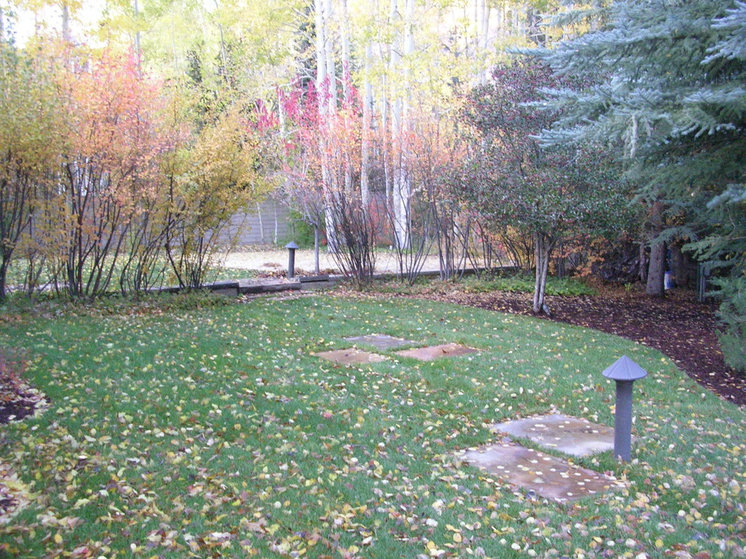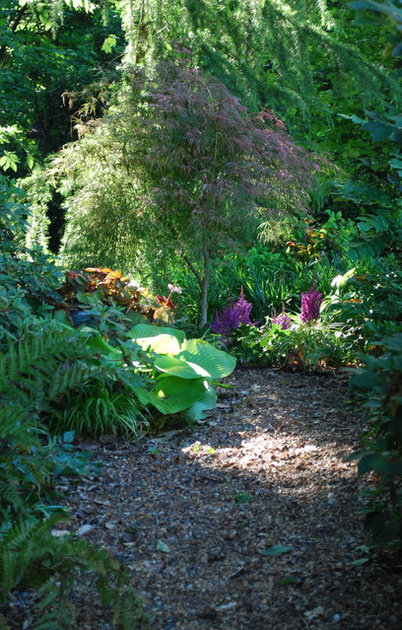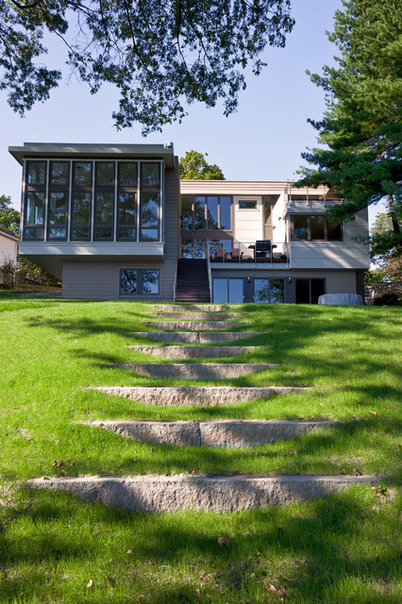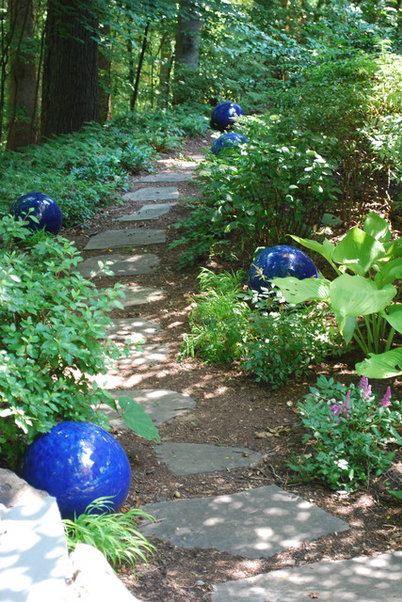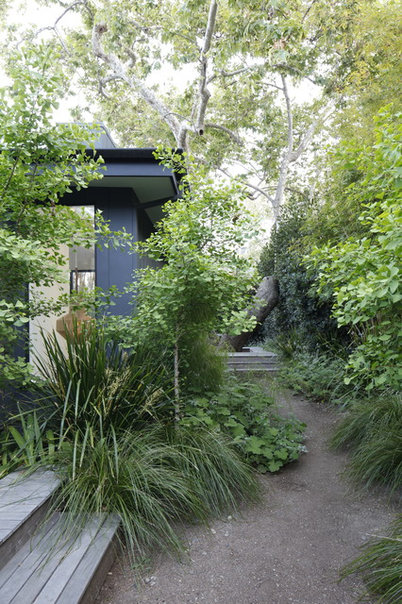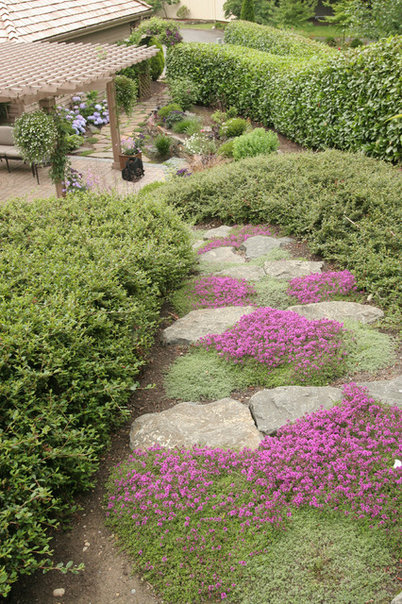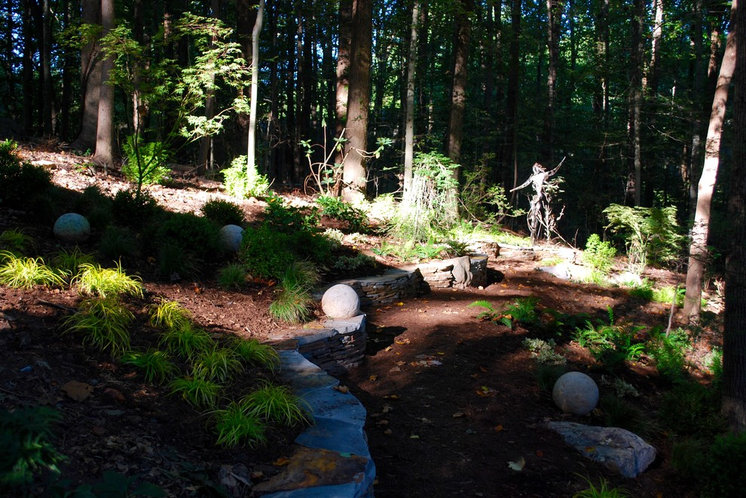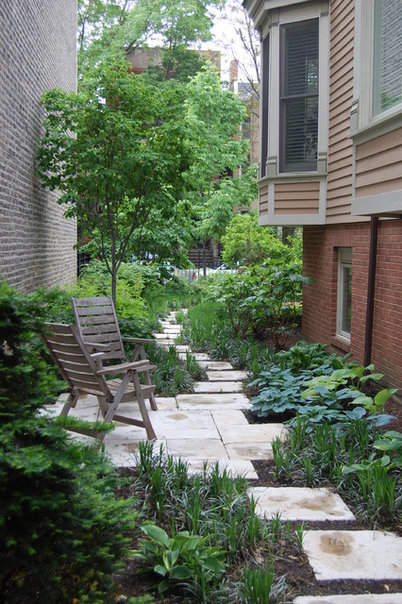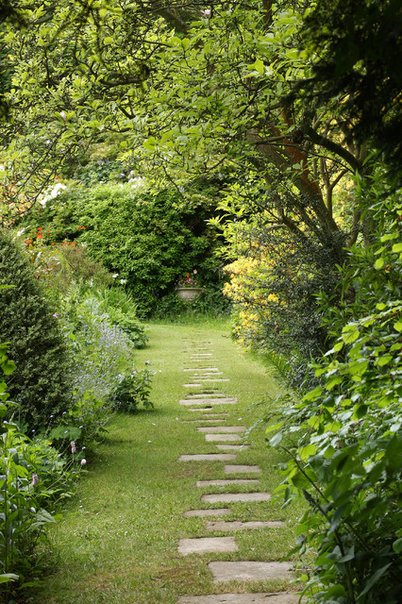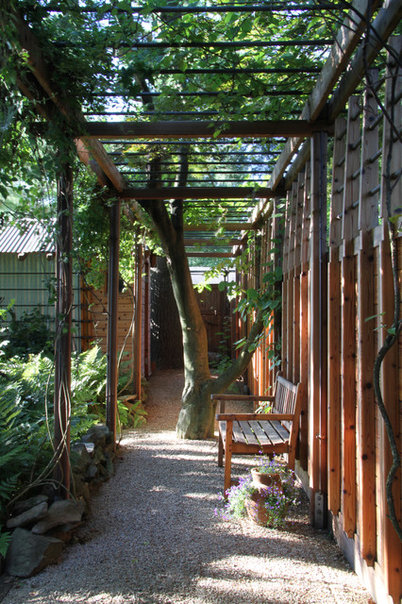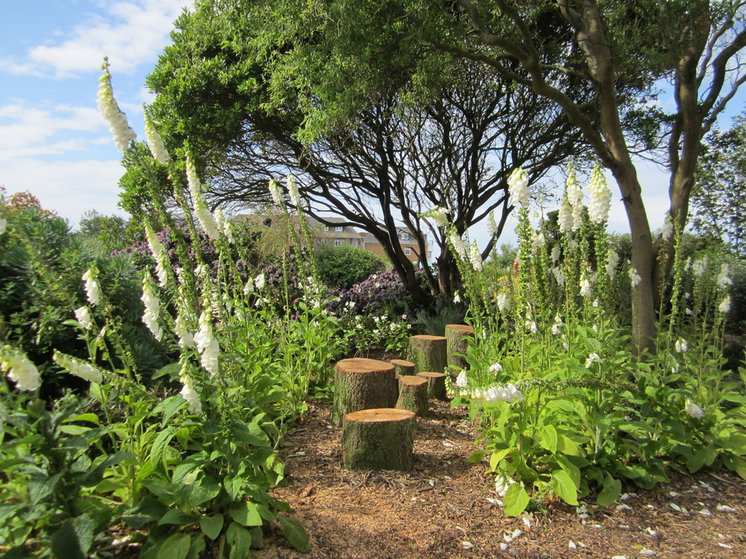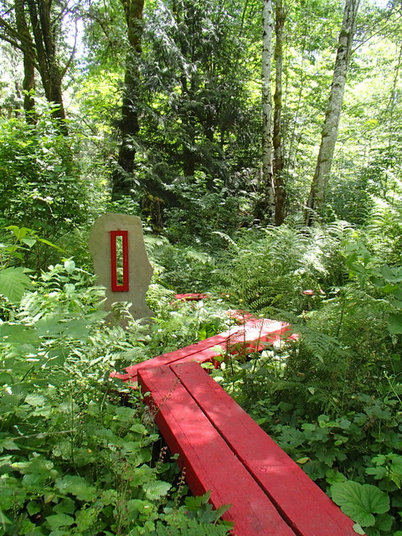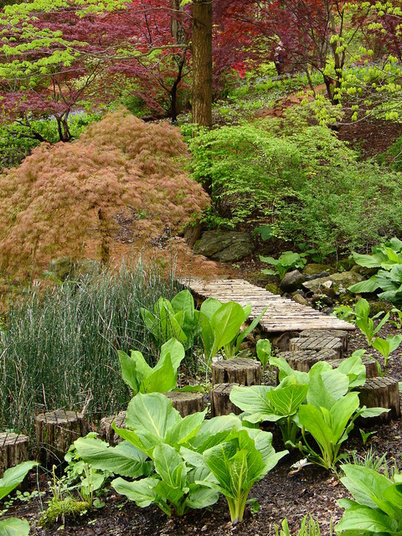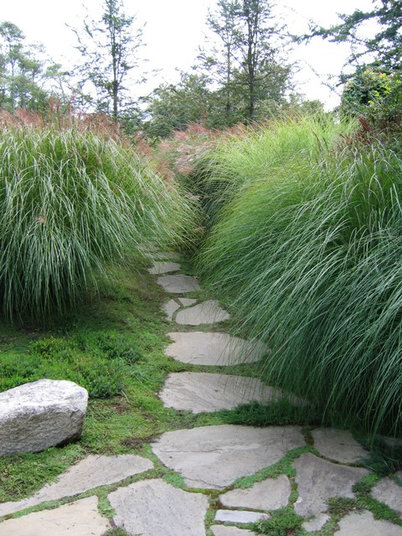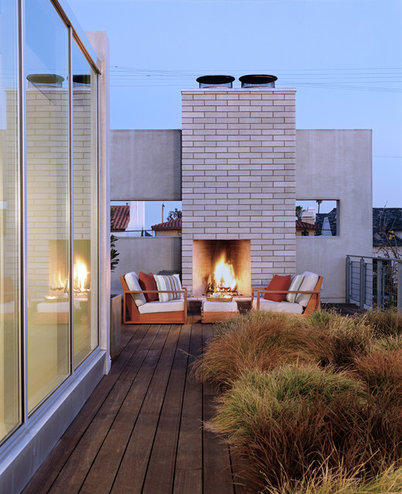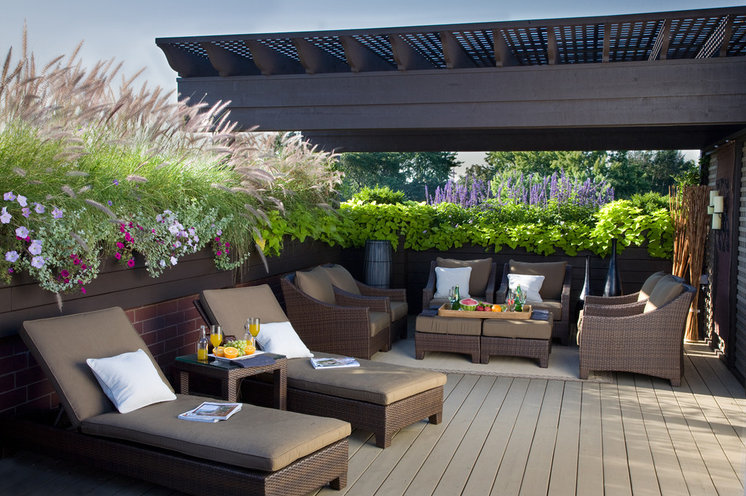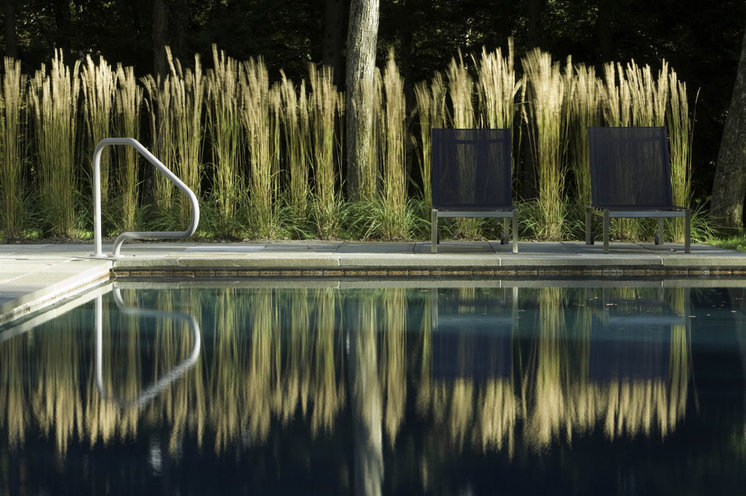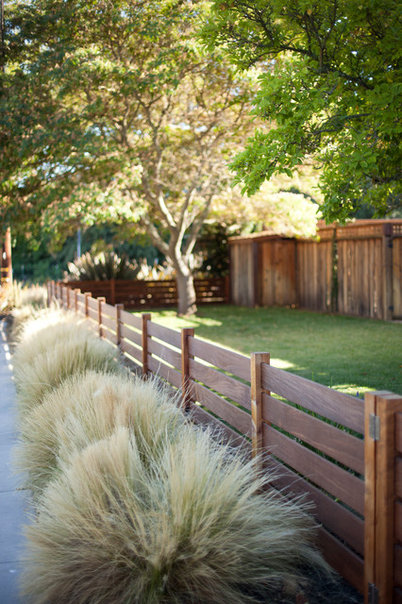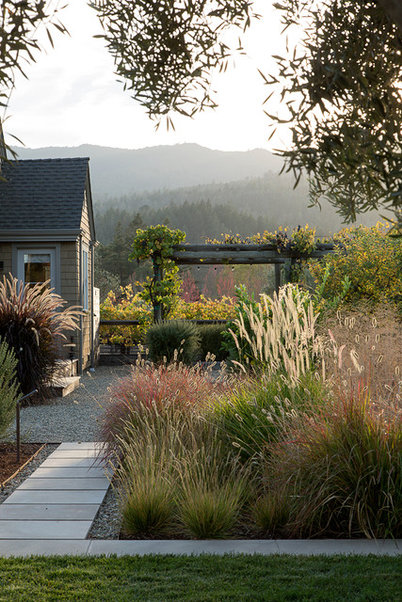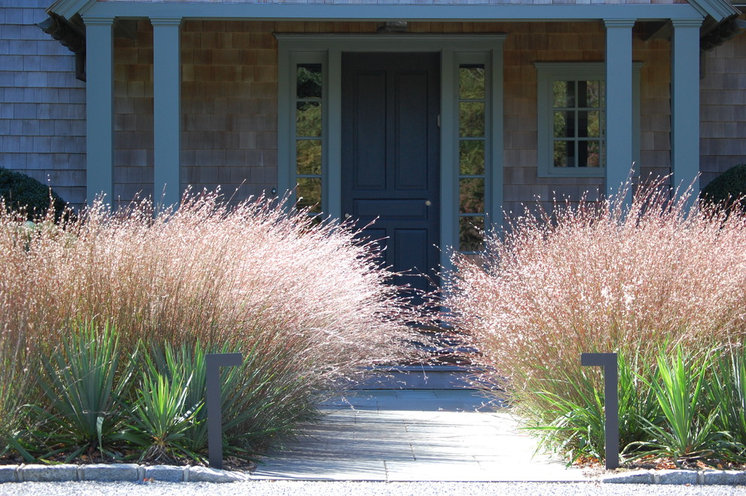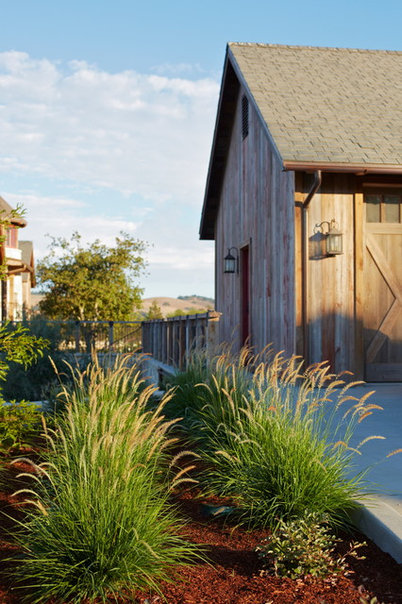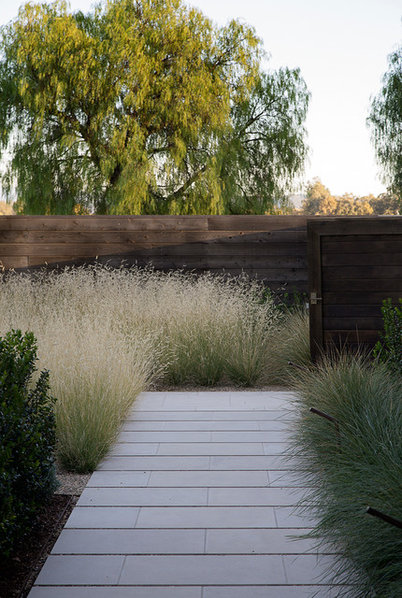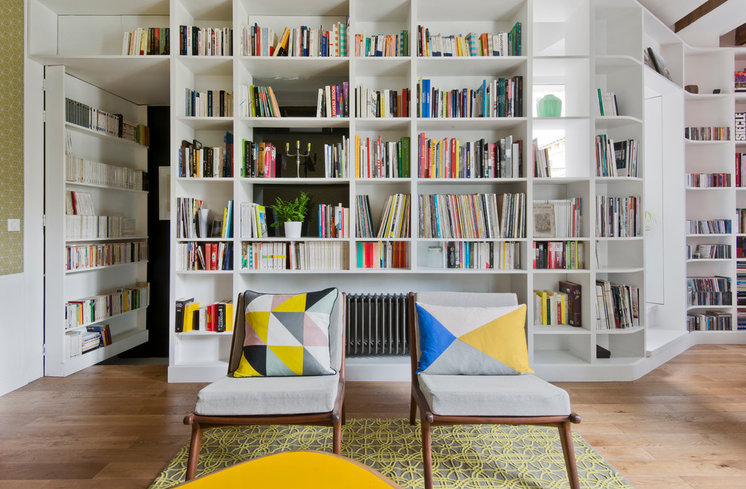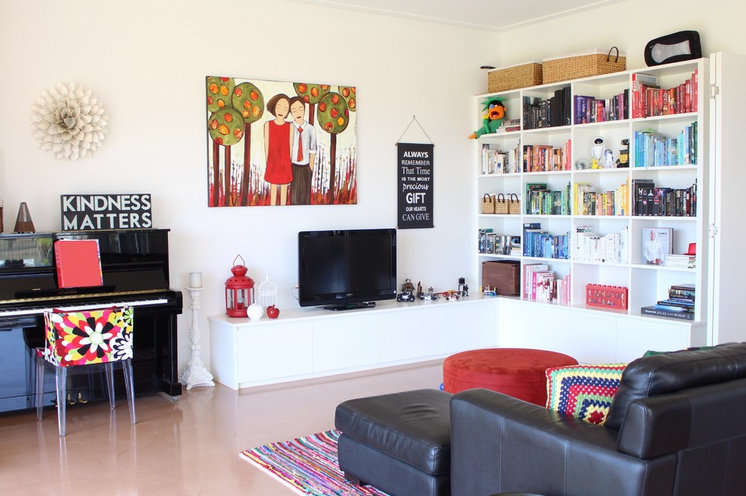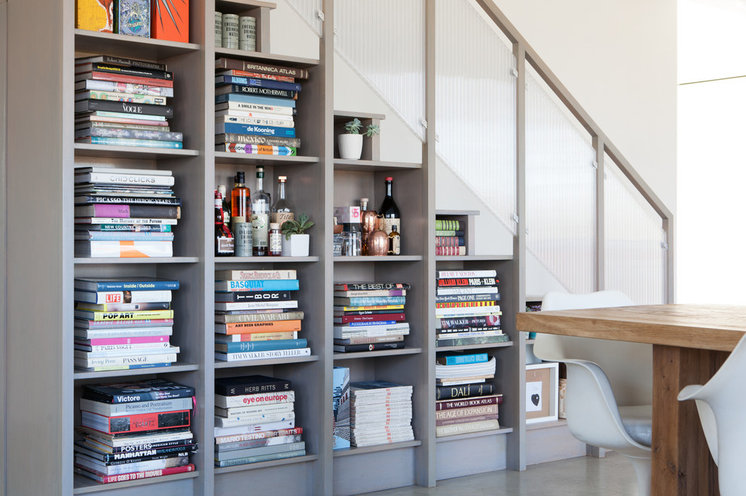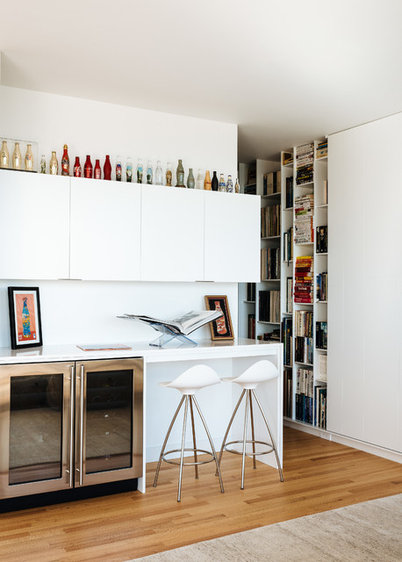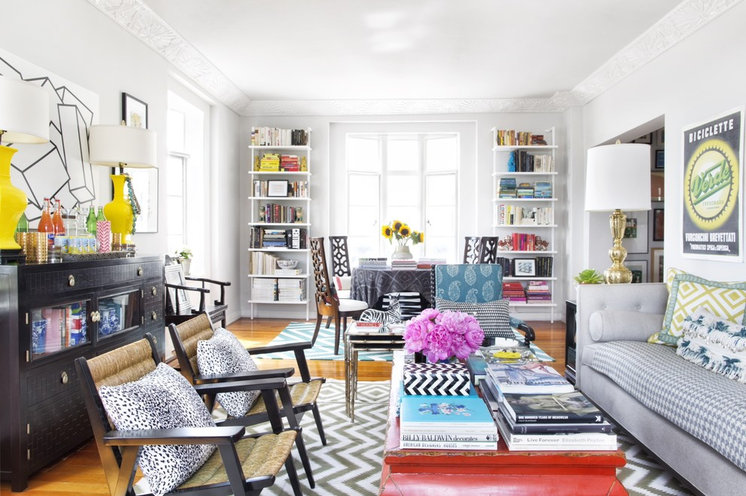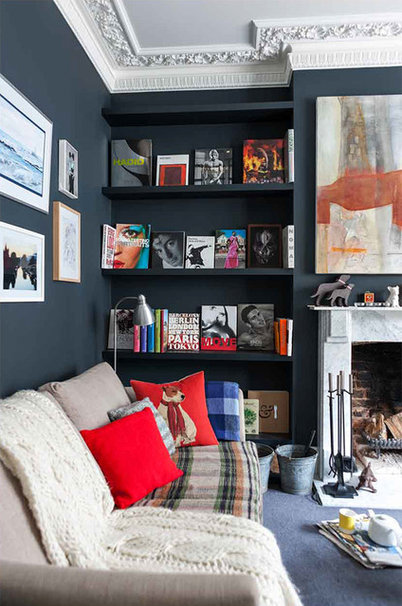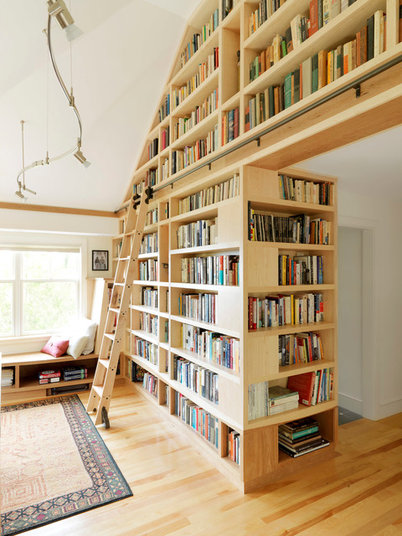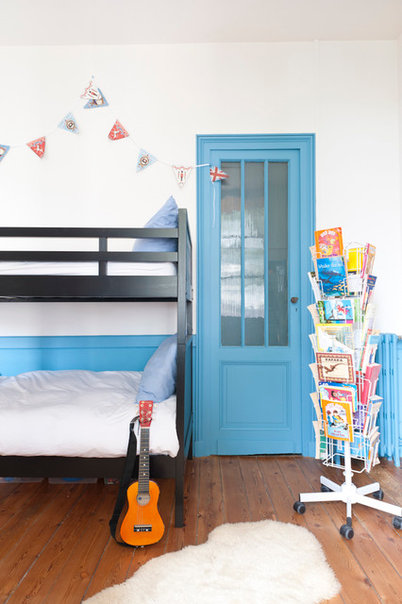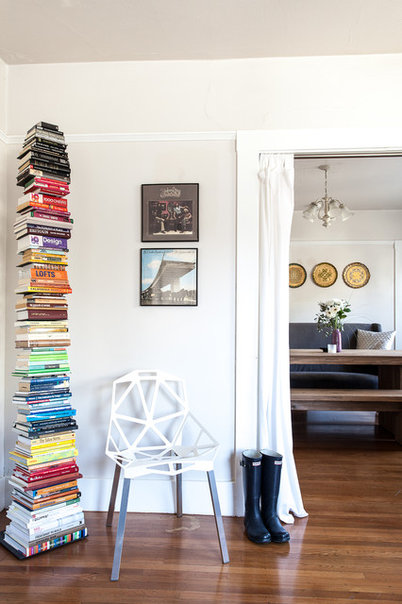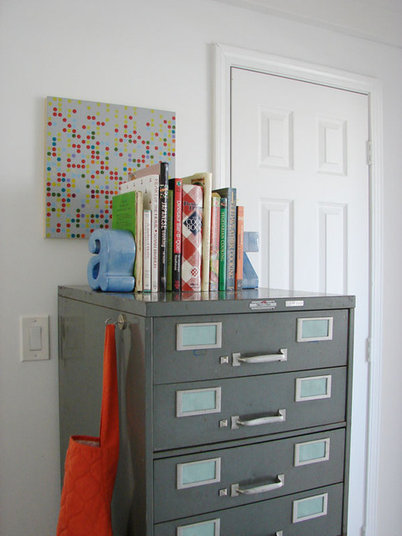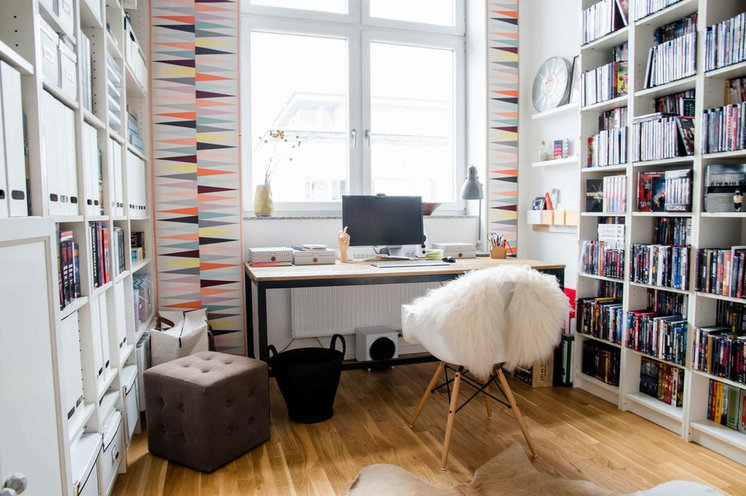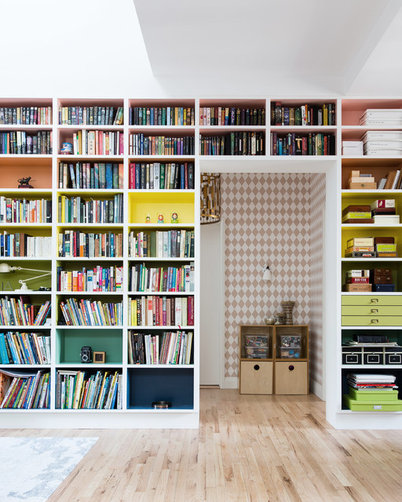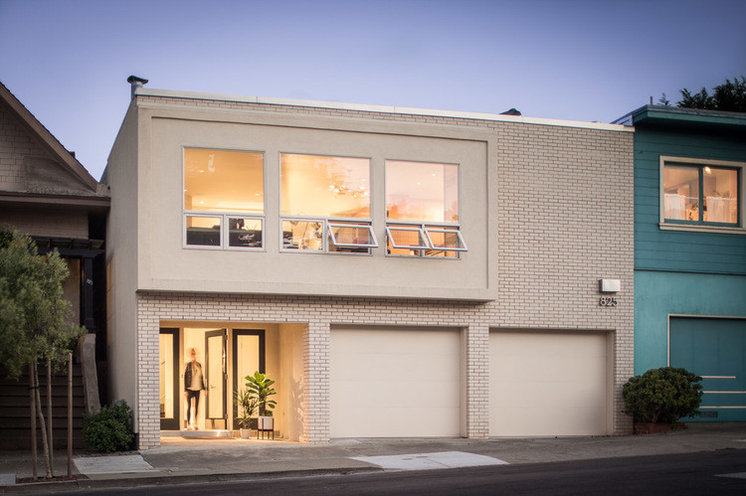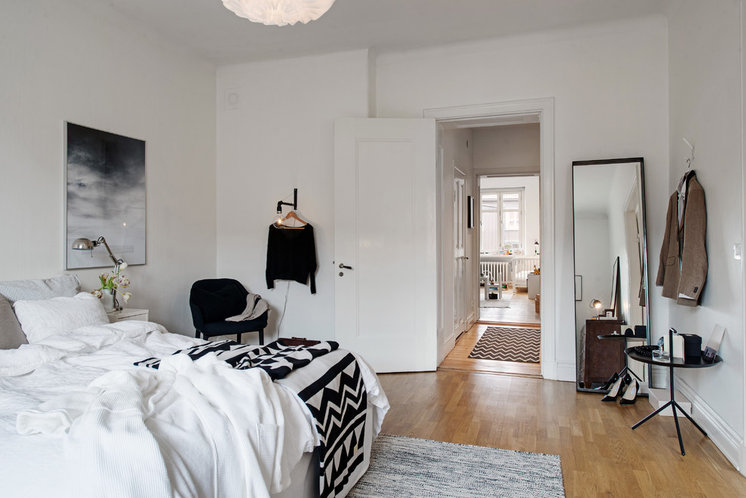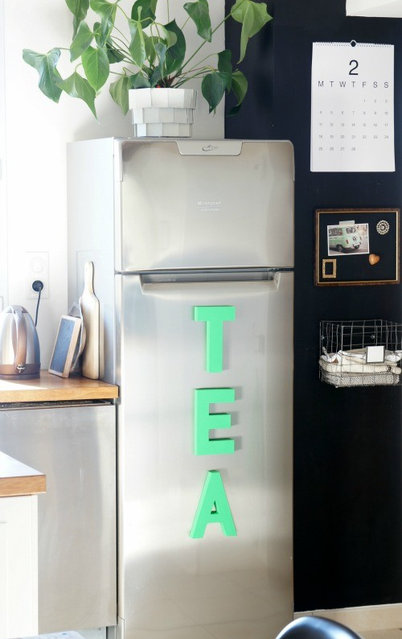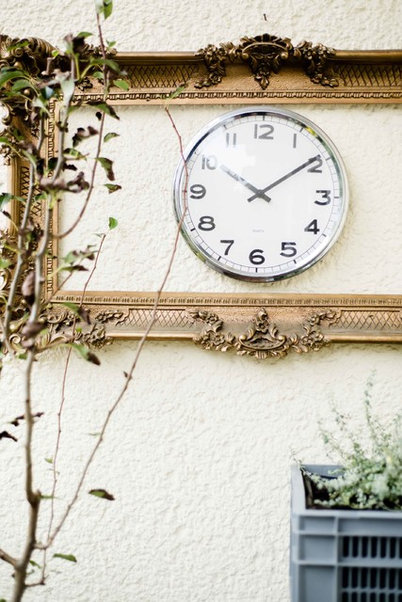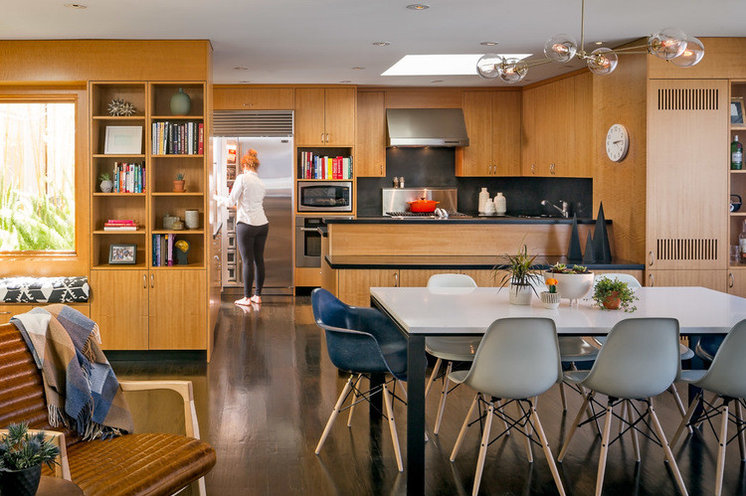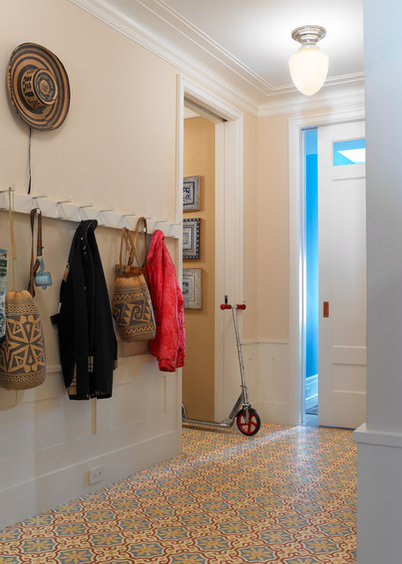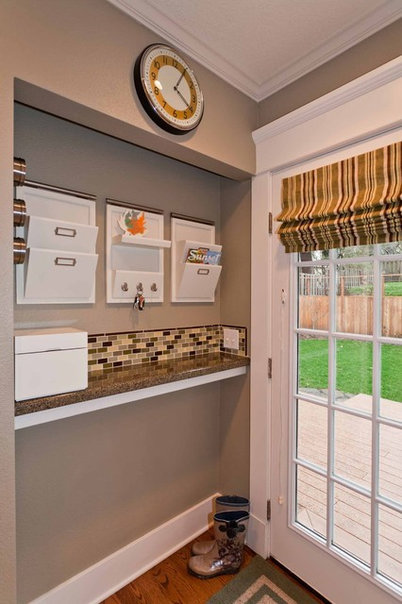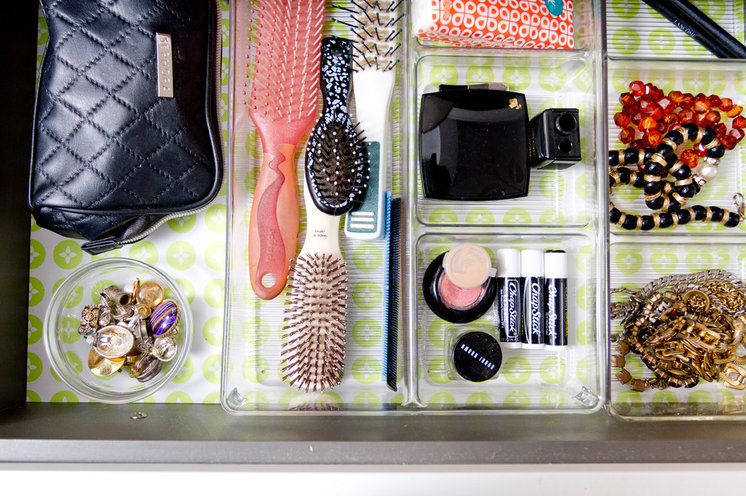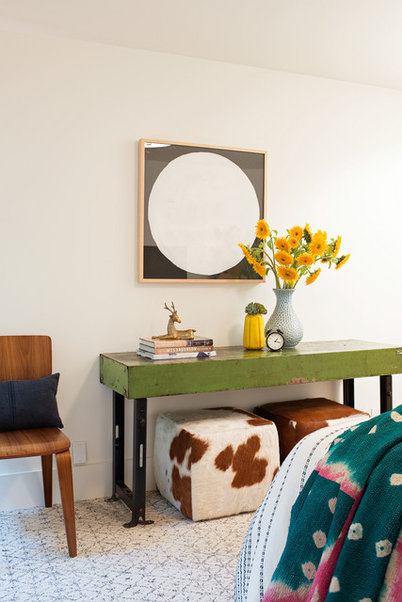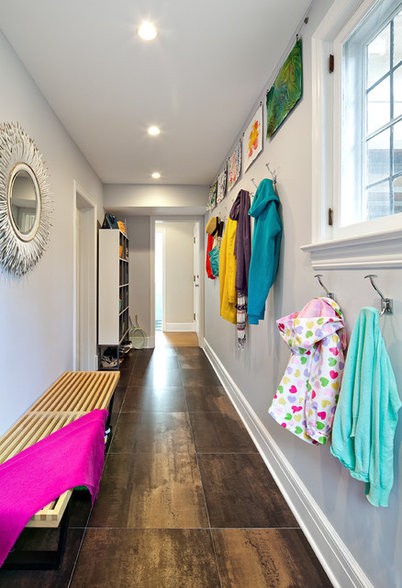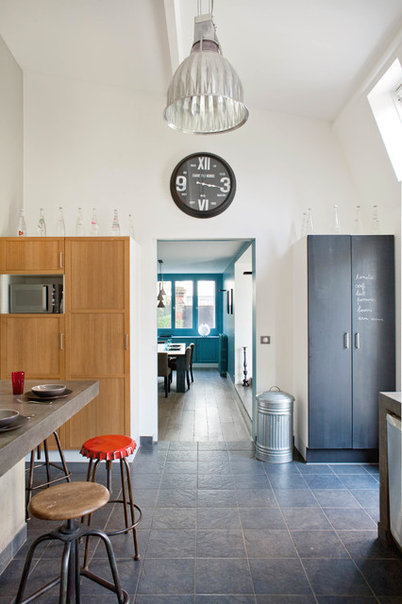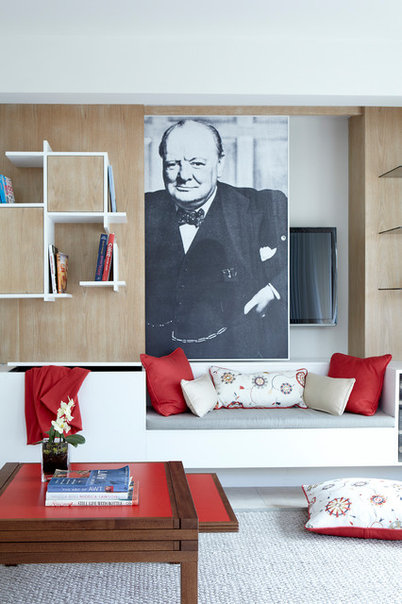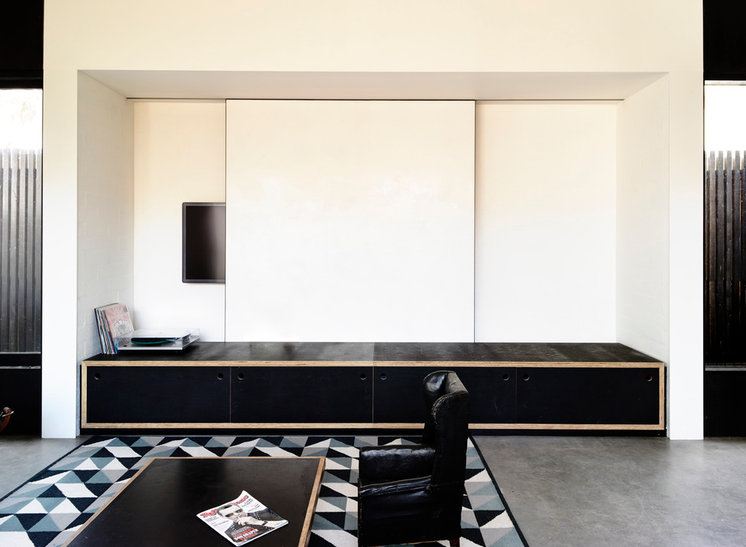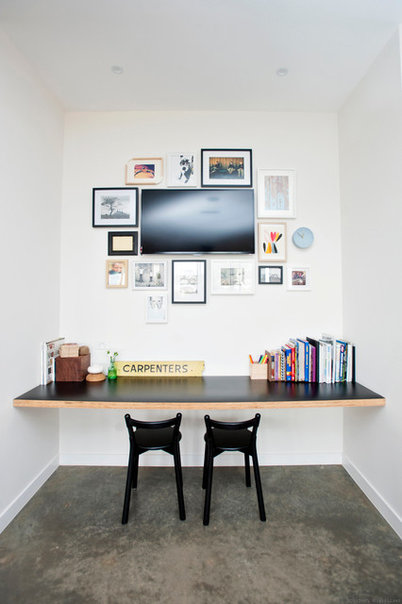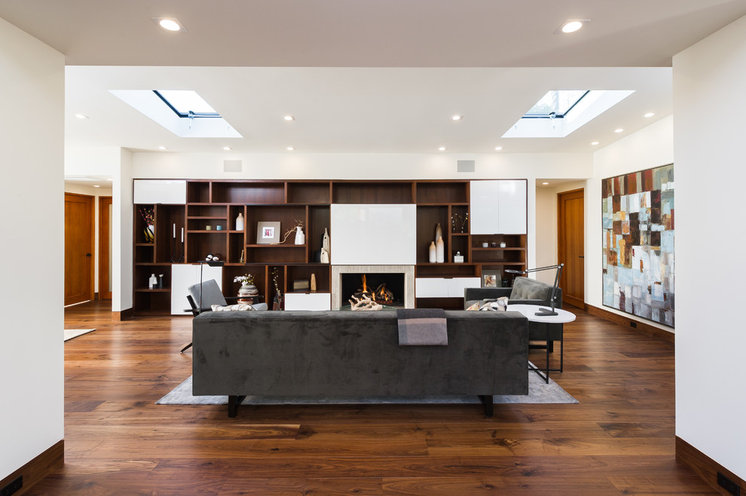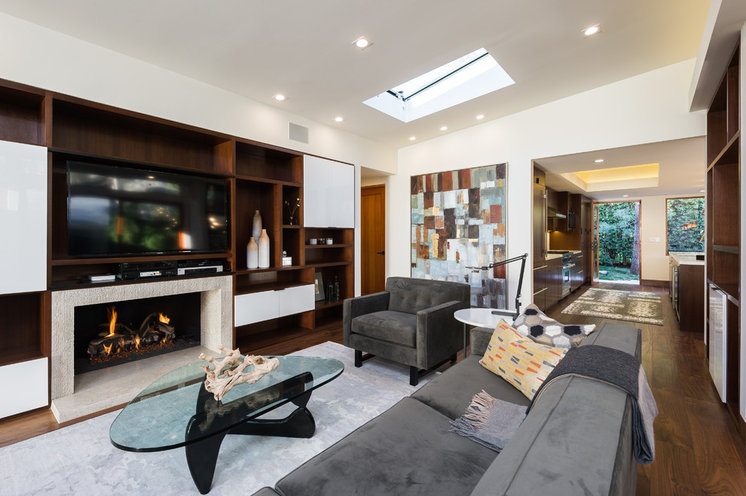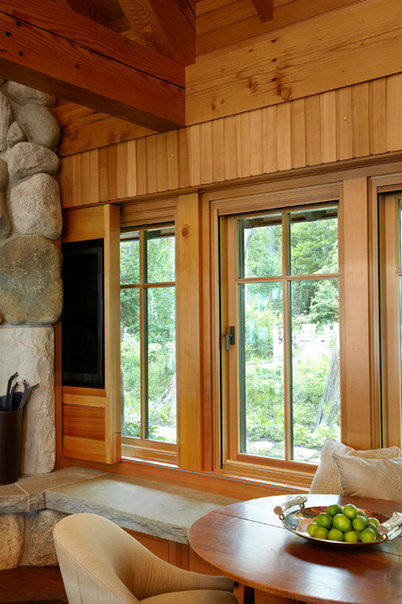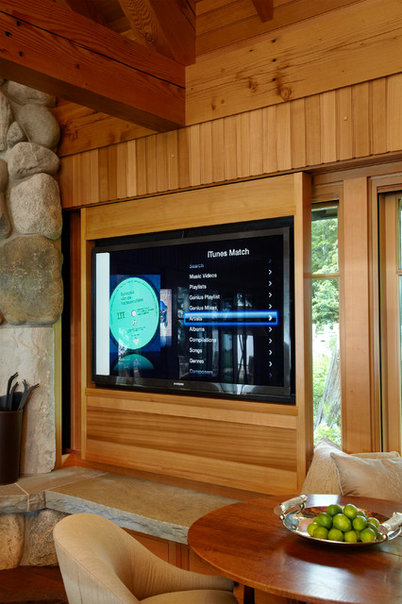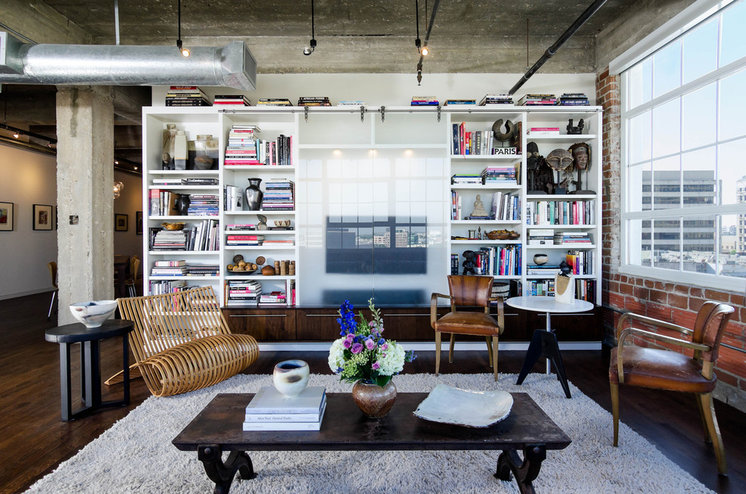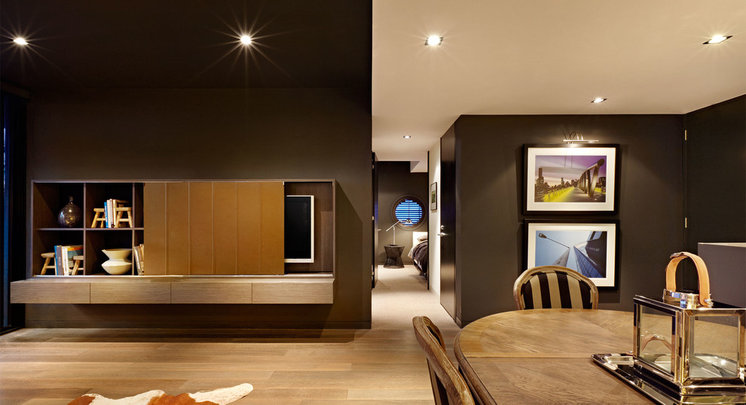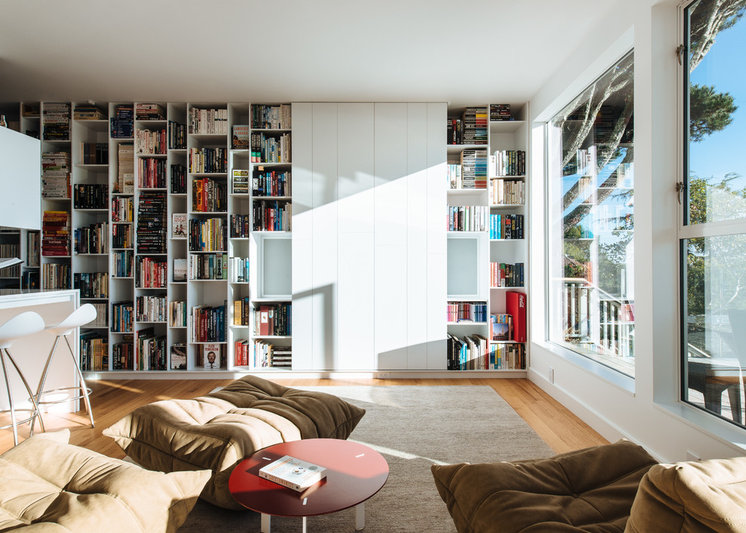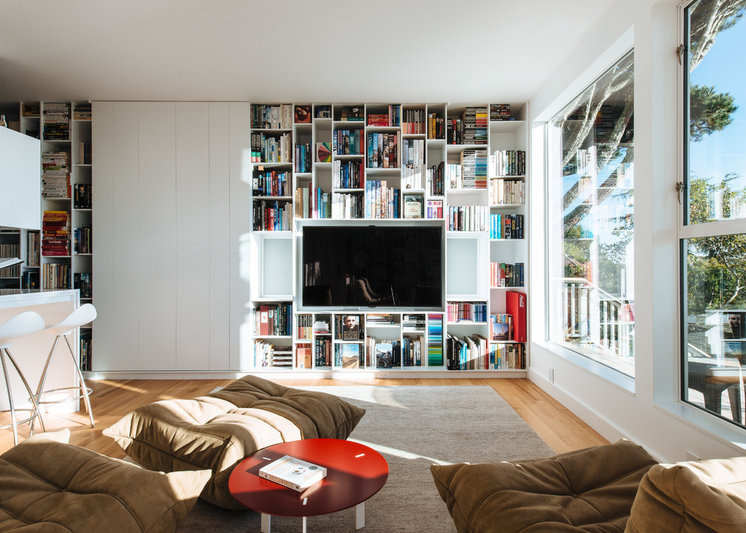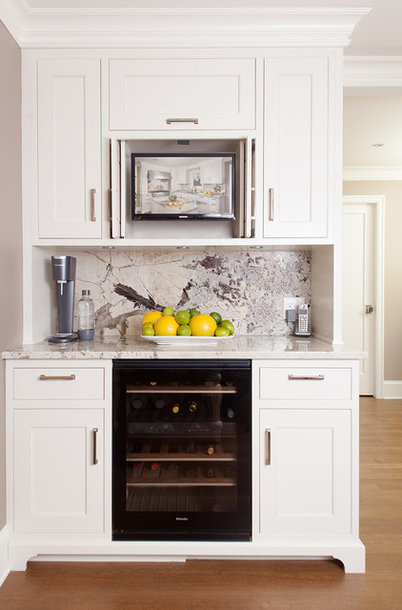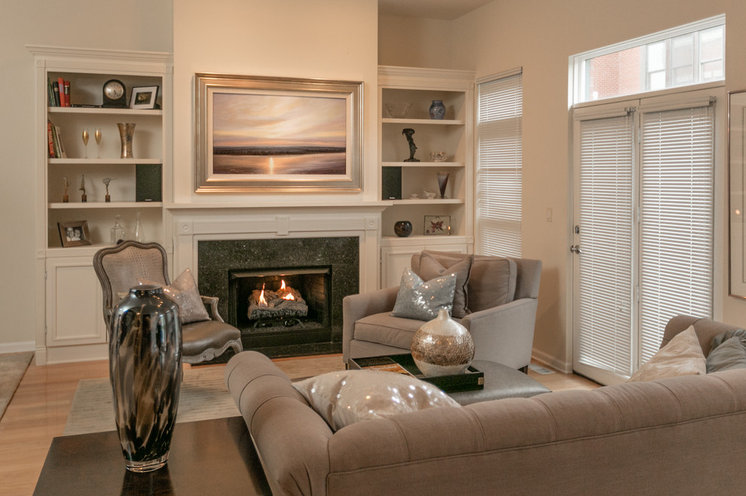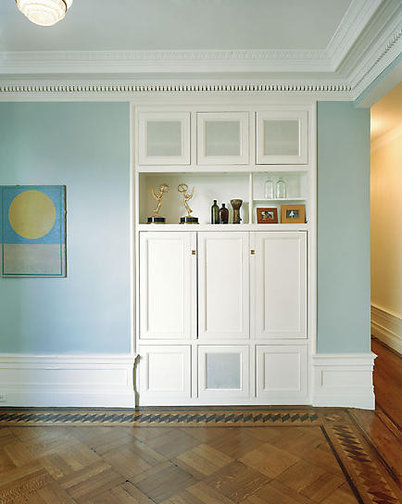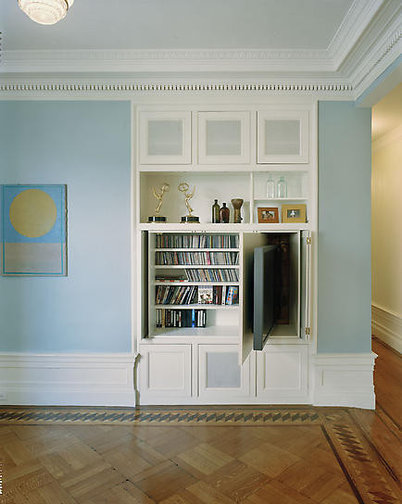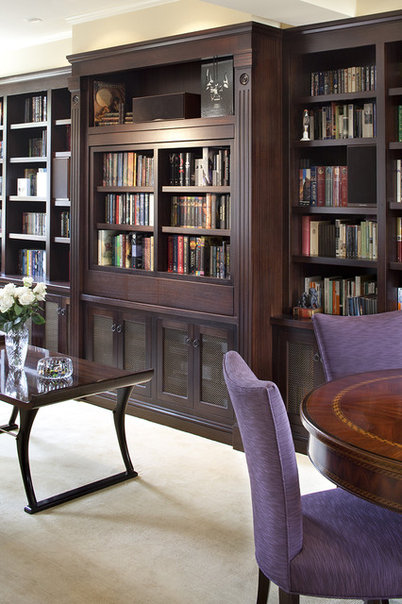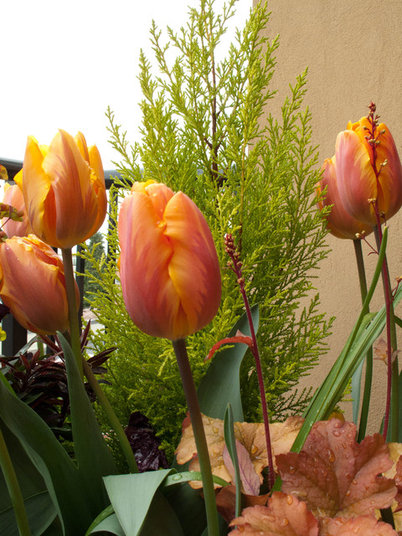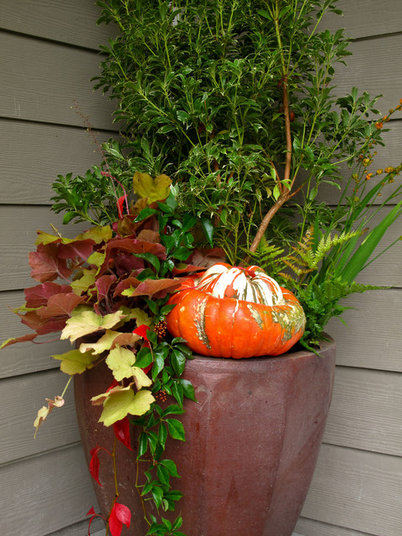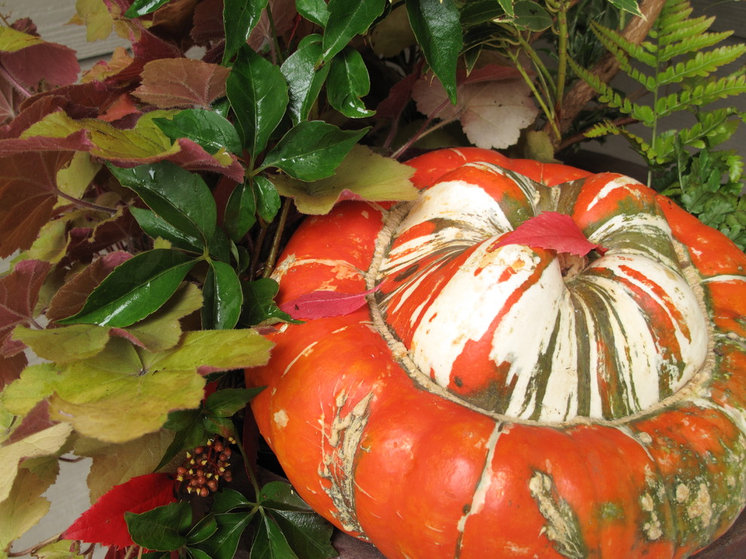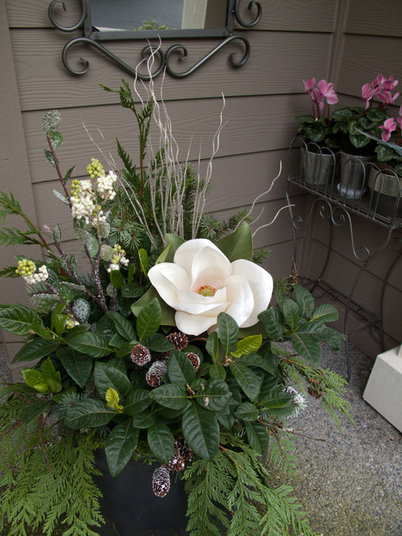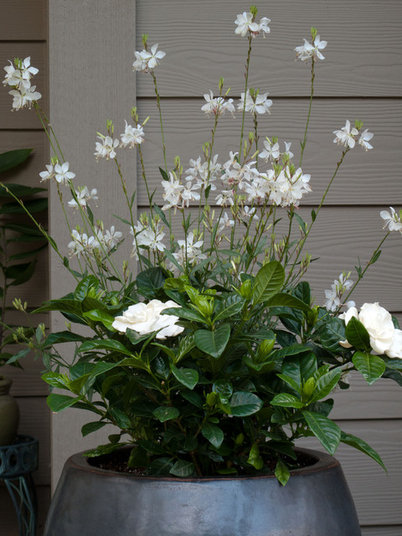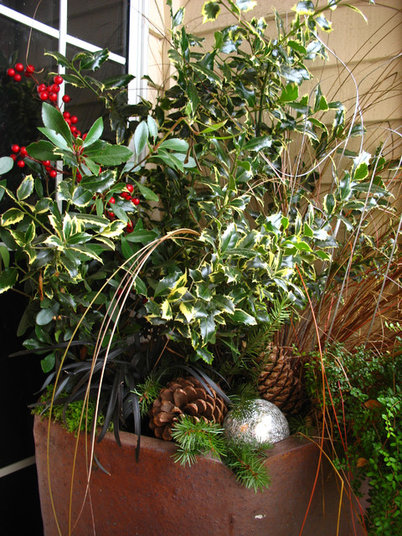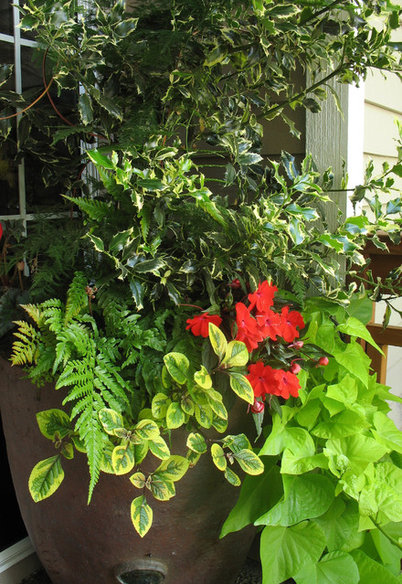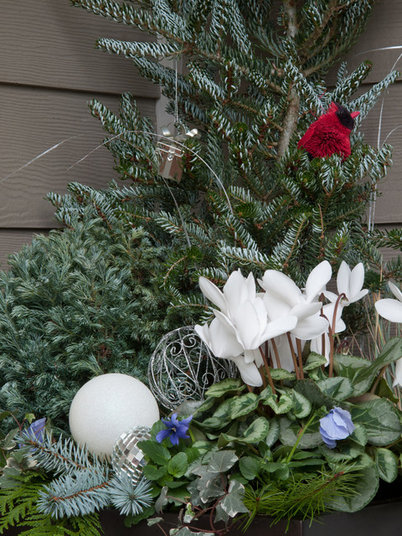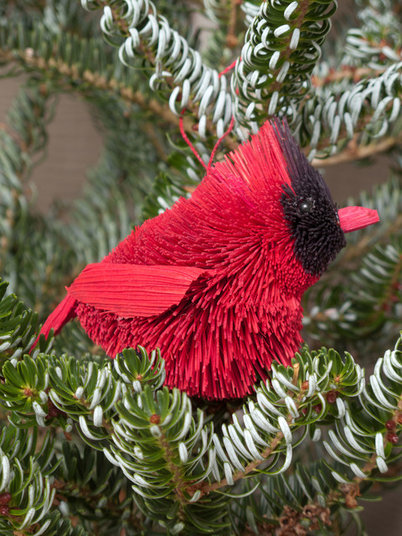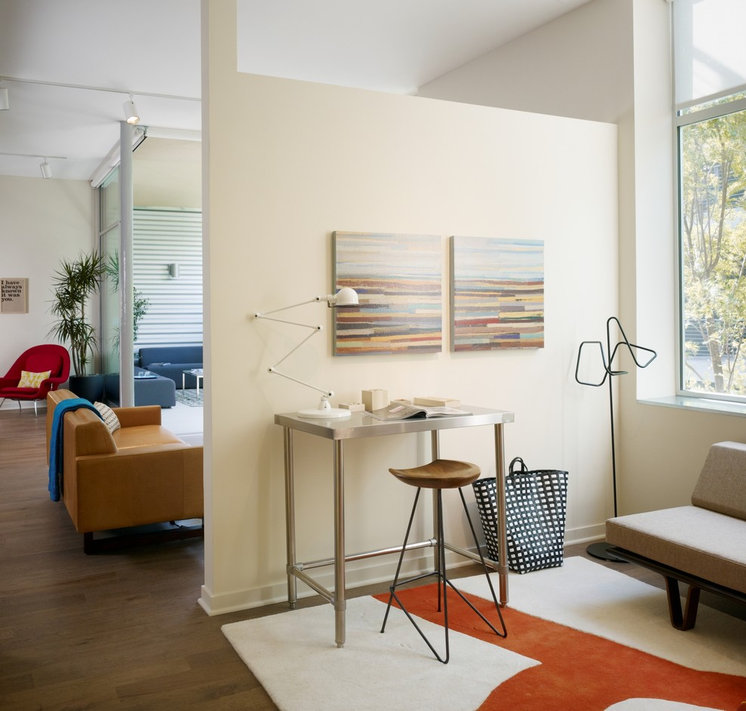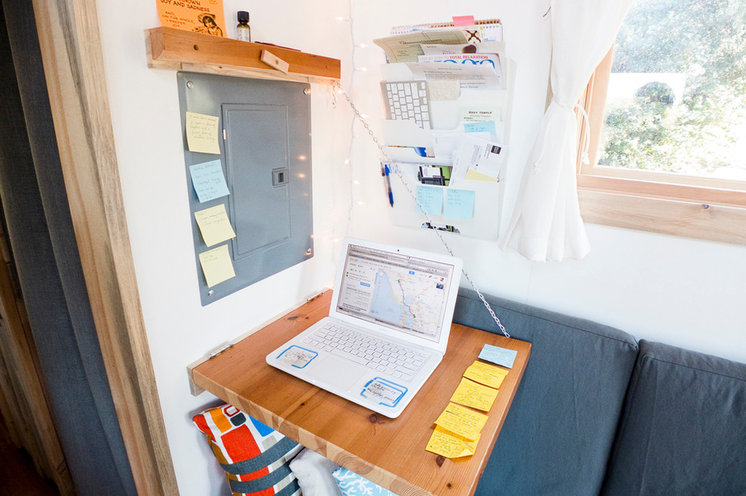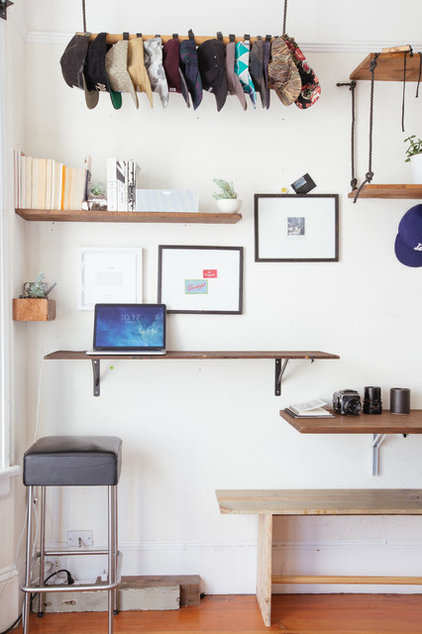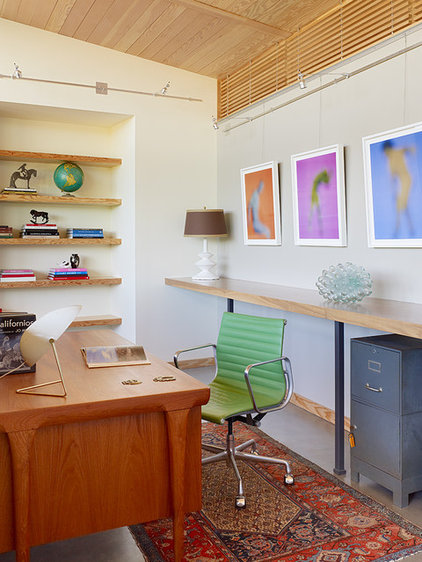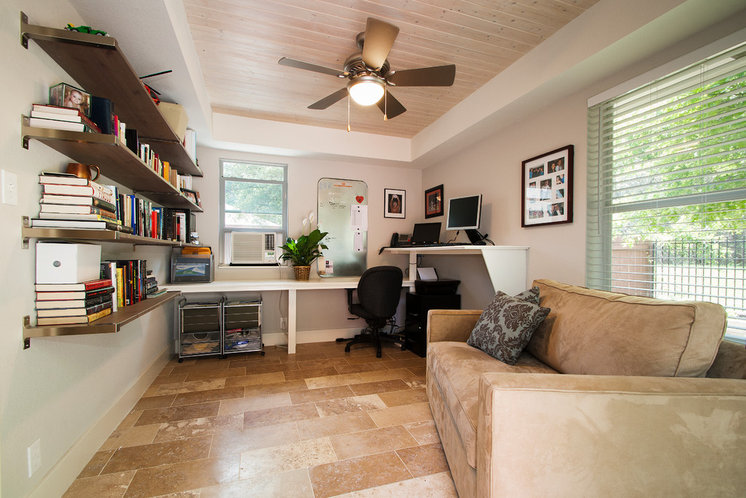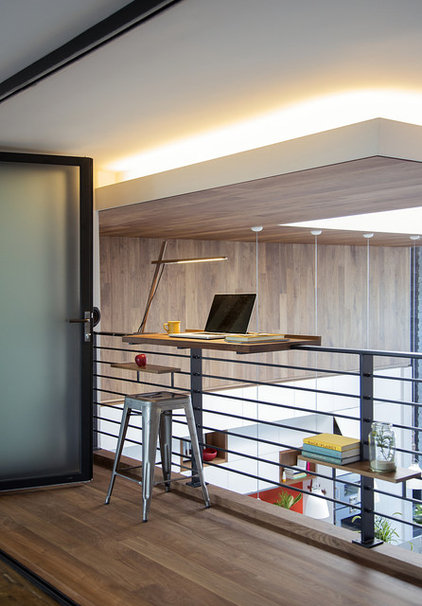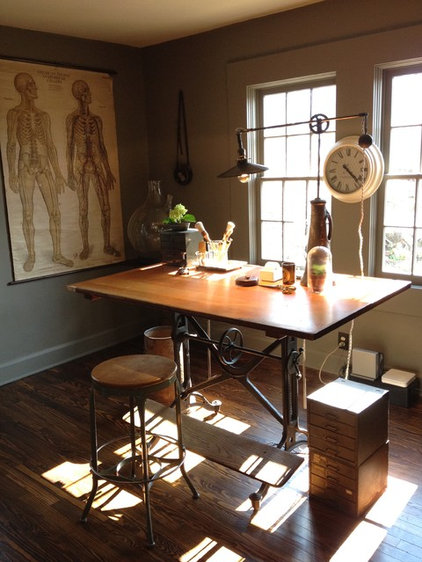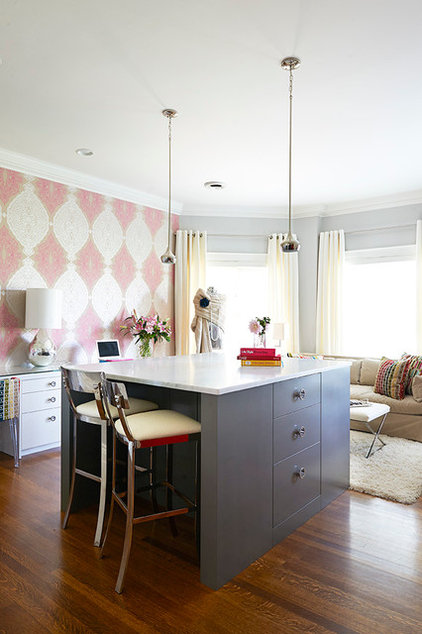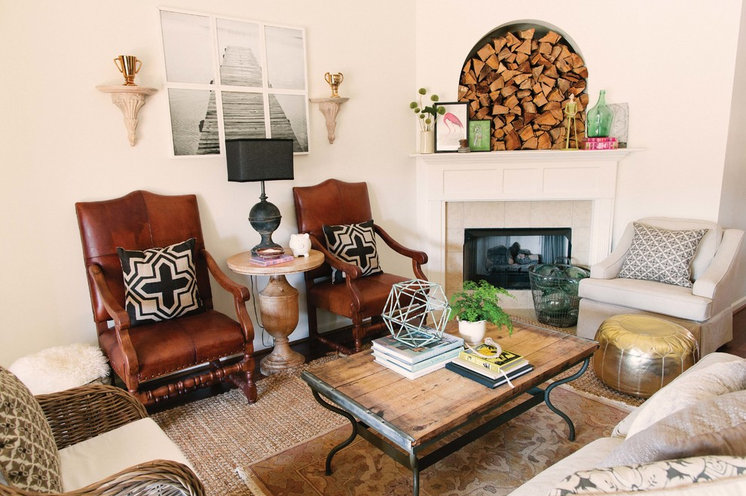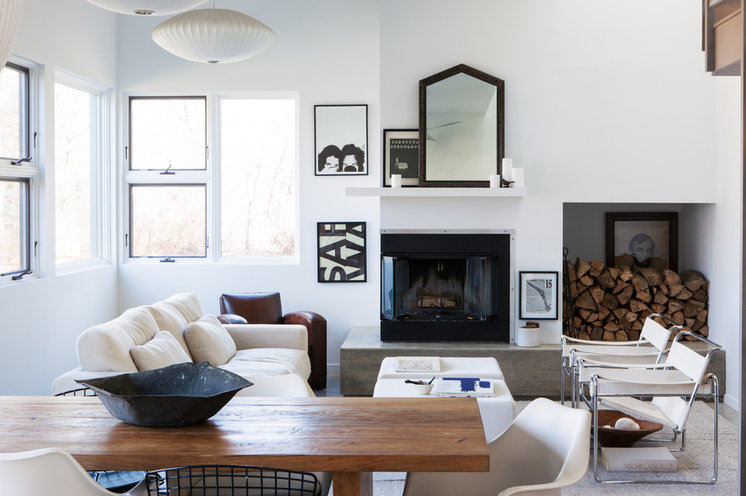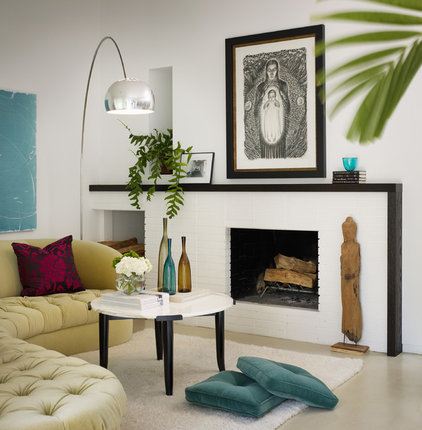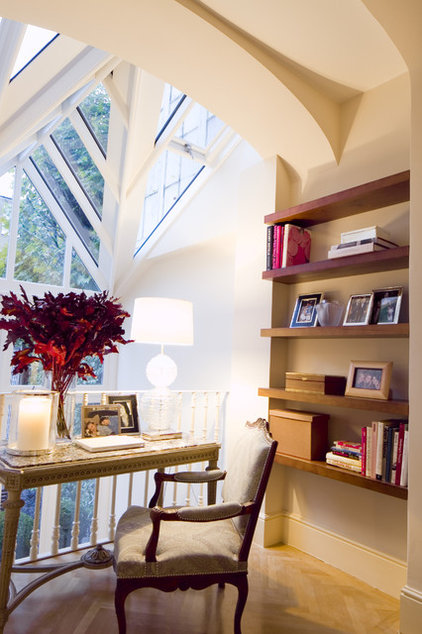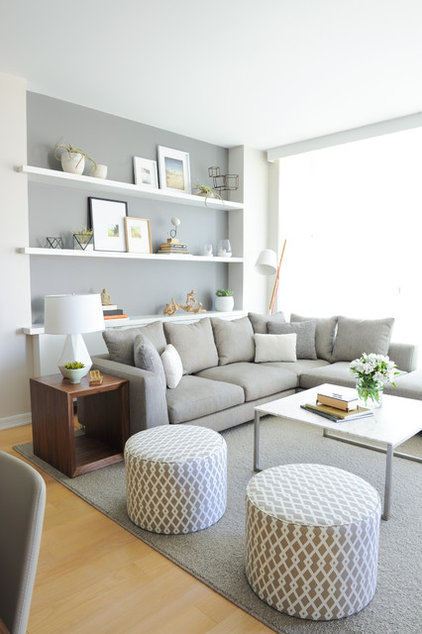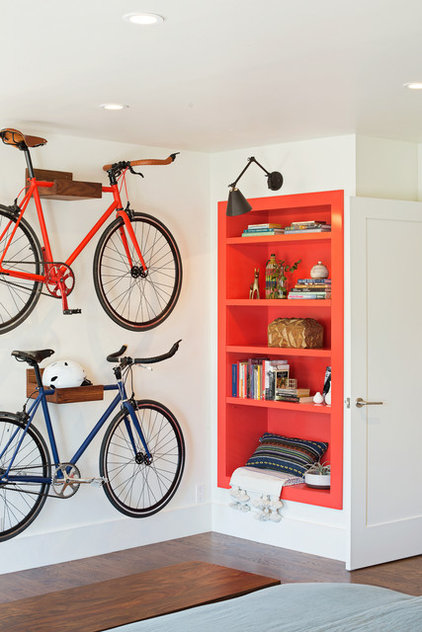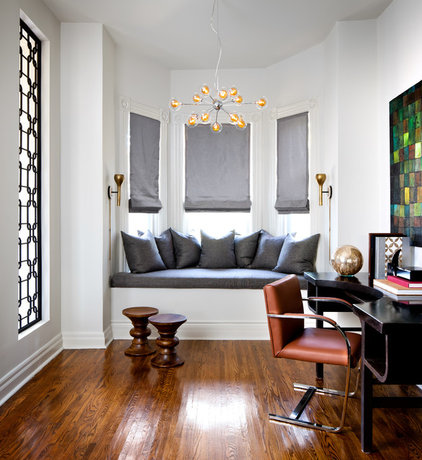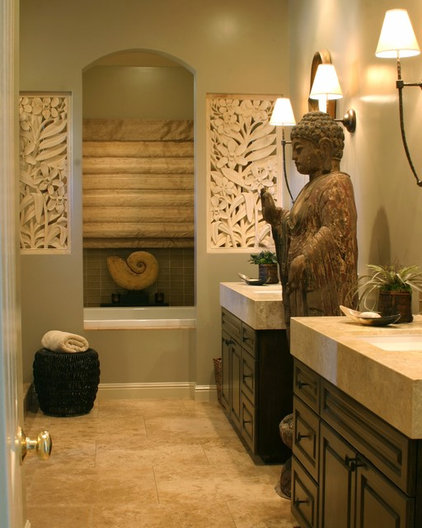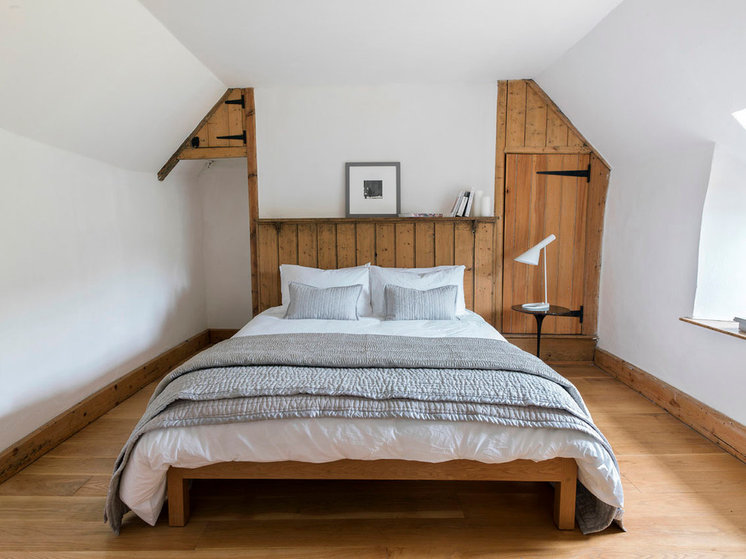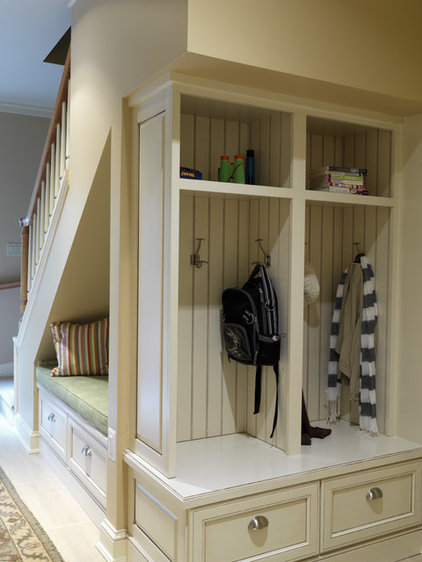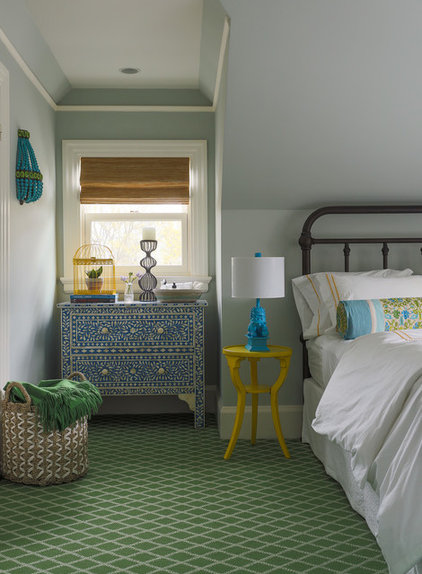The path shown here embraces its sense of place and begs to be explored. The best paths embrace their environment. With its curves and unknown destination, this path calls to those who dare to wander far enough to discover its hidden story.
Tag Archives: Home Maintenance
10 Ways to Use Ornamental Grasses
Grass: Calamagrostis acutiflora ‘Karl Foerster’
Need to know: Feather reed grass does well in most areas (USDA zones 3 to 9; find your zone), and grows tall rather than wide, making it a good choice for small spaces.
Grass: Mexican feather grass (Nassella tenuissima)
Need to know: Mexican feather grass is extremely drought-tolerant and hardy in zones 6 to 10, but is identified as a highly invasive species in California and Oregon. Mexican feather grass reseeds, so it may need to be pulled out in places you don’t want it to spread. If you live in California, the University of California Master Gardener Programrecommends as alternatives California native blue grama grass (Bouteloua gracilis ‘Blonde Ambition’), California native prairie dropseed (Sporobolus airoides), Mexican deer grass (Muhlenbergia dubia) or pink muhly grass(Muhlenbergia capillaris, especially ‘White Cloud’).
Grass: Little bluestem
Need to know: Little bluestem is an incredibly hardy (zones 2a to 9b) and easy-to-care-for plant, native to all of North America except Alaska, Oregon, Nevada, Prince Edward Island, Newfoundland and the Canadian territories. Little bluestem is very drought-tolerant and grows well from seed.
Grass: Pennisetum ‘Fairy Tails’
Need to know: Unlike other varieties of purple fountain grass, Pennisetum ‘Fairy Tails’ does not seed, and so is not considered invasive in California (two other noninvasive varieties ofPennisetum are ‘Rubrum’ and ‘Fireworks’). Purple fountain grass is perennial in zones 8b to 11.
Grass: Pink muhly grass, Muhlenbergia capillaris
Need to know: Native to the East Coast of the United States, pink muhly grass clumps, so it will not invade other planting beds. Hardy in zones 7 to 9.
Grass: California meadow sedge (Carex pansa)
Need to know: Carex pansa is a species of sedge native to the west coast of North America, spanning from California to British Columbia, and thrives in that area. For other parts of the U.S., the Brooklyn Botanic Garden recommends Texas native Carex perdentata; Catlin sedge (Carex texensis), hardy to Zone 6; Pennsylvania sedge Carex pensylvanica, native to the eastern and central United States; and Carex senta, known as Baltimore sedge, native to the eastern United States.
How to Care for Your Home Library
Find your library style. No matter your reading preferences, the books you choose to keep in your home should hold special meaning for you — books that are only so-so aren’t worth making room for on your shelves. Once you’ve decluttered your library, it’s time to decide on a sorting method. Here are a few to consider.
- Bookstore-style. Sorting nonfiction books by subject and fiction alphabetically by author works especially well for larger book collections, for which other organizing methods would fall short.
- By theme. This fun method of sorting will appeal especially to creative types. To try it, pick a broad theme (like “water”) and shelve all books related to this topic together, from cookbooks (coastal cooking and fish recipes) to fiction (Like Water for Chocolate, The Old Man and the Sea) to nonfiction (beach houses, water-wise gardens).
- Rainbow order. As sorting methods go, this controversial idea works best for visually oriented people. If you learn best visually, you may be surprised at how easy it is to find a certain book based on the color of the spine.
Try it: Sorting by color. If sorting your books by color sounds appealing to you, I urge you to give it a try — there is something soothing about looking at shelves arranged by color, and it never fails to impress guests. If you want to try it, you will need to dedicate an hour or more (depending on how many books you have to sort) to the initial process. Here are a few color-sorting tips.
- You don’t need to stick with rainbow order; books in blocks of color look great no matter the order.
- Depending on the colors in your decor (and your personal preference) you may want to limit the color blocking to certain hues. Books that don’t work with the scheme can go in baskets or be moved to shelving in a different room.
- Even one color-sorted shelf can have a big impact. Try it with your cookbooks!
Try it: Add cover appeal. One of the reasons it’s so much fun to browse in a good bookstore is the visual nature of the book displays. To increase engagement with your home library, try to find a few places in your home where you can display books with covers facing out. Here are a few ideas:
- Top a round table with short stacks of interesting books.
- Install picture shelves and use them to display books instead of artwork.
- Top a credenza with a few favorite books, either lying flat or standing upright.
Special care for rare books. If you have a passion for collecting rare first editions or antique volumes, it is important to take some precautions to protect your investment. To keep your most treasured books in good shape, be sure to:
- Keep books out of direct sunlight, as it can bleach the covers.
- Shelve books neatly, with bookshelves snug but not overcrowded.
- Lay very large and heavy books flat.
- When looking at a book, set it on a table, and don’t open the spine farther than it wants to go.
- Wash your hands before handling!
Mastering Your Morning Routine
First figure out what’s holding you up. If you find yourself running late (or nearly late) in the morning, the first step to taking control of your time is to identify how you are spending it. Where does your routine tend to veer off track? Look over this list and see if any fit.
- Hitting the snooze button repeatedly, or sleeping through the alarm, then rushing to get ready
- Getting the kids ready takes forever
- Just sipping coffee, reading and browsing online make the time get away from you
- Can’t find anything to wear
- Can’t find essential items (keys, phone, bag) as you’re about to head out the door
- Forgetting about things you need to bring (lunch, signed papers, gym bag) until the last second
1. Get dressed first. Instead of sipping coffee in your PJs, try making a practice of getting dressed first thing. Whether or not you have kids, if you leave your own getting ready to the last minute, mornings will always feel crunched for time. If choosing an outfit tends to eat up a lot of time, select it the night before, including accessories — then you can just put it on in the morning, and you’ll already be a step ahead.
3. Use a big wall clock to stay on track. Sure, you can always glance down at your phone,but there’s something about having a nice, clearly marked wall clock that makes it easier to keep schedules running smoothly. Plus, if you tend to get distracted by your phone when you check the time, this can help cut down on aimless browsing.
If you’ve been underestimating how long it takes to complete morning tasks, keeping track on the clock can give you a clearer picture of how much time you need to get ready and leave. You may find you need to get up earlier, or shift some activities to another time of day (like prepping lunch the night before), to get out the door on time.
4. Use a timer. If there is a particular part of your morning routine that you either (a) dread or (b) spend too much time on, using a timer can help speed things along. For instance: Set a timer for 10 minutes to enjoy your coffee and catch up on email, but when the timer goes off, immediately get up and move on. Or set a timer for five minutes and see if you can pack all the lunches before it goes off.
For kids, using a stopwatch can be even better than a timer, since it turns getting ready into a race — use it to time them putting on shoes or cleaning up toys, and see if they can beat their own record. Just don’t make breakfast a race … no one wants to start the day with a stomachache!
5. Dangle a carrot. It was impossible to get my son motivated to get ready for school in the morning, until we started leaving early enough to play on the playground or have a scooter ride before the start of school. Now (most days, anyway) all it takes is a reminder about the extra playtime to get him to cooperate.
And if you’re the one who has trouble getting out the door on time, find a treat worth leaving the house early for, whether that’s a refreshing walk by the water or a cup of coffee at your favorite place.
6. Have a precise place for every single thing you need in the morning. The more specific, the better. A dish for the car keys, a tray for your phone and wallet, wall hooks for backpacks and jackets, and a wall-mounted letter sorter can all be useful additions to the entryway, if used consistently.
Papers can be especially problematic, so it helps to be a stickler about sorting — letter sorters are great, but only if each slot is labeled and used as intended. Sort in a way that makes sense for your household. Just make sure to have a way to keep important outgoing papers (like school forms that need to be returned or bills to be payed) separate from the rest of the onslaught.
7. Add little conveniences to the entryway. For instance, I’ve started keeping a hairbrush in a drawer by the front door to give my son’s hair a swipe before we leave, which saves a last-second trip back upstairs to search for it. Other items you might find helpful:
- A pen for signing school papers
- Sharpie and name labels for sticking on things before they go in the backpack
- A spare phone charger
- A stash of clean kids’ socks
- Nonperishable grab-and-go snacks
8. Try some alarm clock tricks. If all the strategies in the world won’t help because you simply can’t seem to get out of bed on time, you may need to change your waking-up routine. Here are a few tricks to try.
- Put your alarm out of reach, so you have to actually get out of bed to turn it off.
- If you’ve been using your phone as an alarm, try an old-fashioned alarm clock — they tend to be louder and more annoying.
- Pretend you have something super important to do. Have you noticed that it’s easier to get up early on an important day, like your wedding, or the first day of a new job? Before going to sleep the night before, take a moment to think about what time you need to get up and why it’s important that you do. In my completely personal and unscientific research (on myself), this does seem to help.
- Get up earlier gradually. If you’ve been waking up way too late, start shifting the time you get up by no more than 20 minutes earlier each day.
- Get to bed earlier. If you’re short on sleep, mornings will continue to be hard.
9. Unpack first thing. Your getting-home routine is just as important as your morning routine in ensuring that you get out the door on time. When you arrive home, don’t just fling your things down anywhere. Take the time to unpack all of your bags, hang up coats, file papers and put your keys and phone in their places. If your children are having trouble following a getting-home routine, hold off on an after-school snack or screen time until their stuff is away, and pretty soon it will be second nature.
Kid-friendly tip: Add a few low hooks. Starting young children on positive, doable habits, like hanging up their own backpack and coat, paves the way for more complicated responsibilities later on — not to mention makes your life a bit easier! Hang a few sturdy wall hooks within reach to make the job easier for little hands.
Can You Spot the TV?
The transparency of the fireplace and stunted height of the structure keep the piece from intruding on the space or blocking the flow of light.
TV mirrors like this have come on the market as consumers look for entertainment systems that won’t disrupt their room designs. You simply select a frame that suits your decor or choose no frame at all. Just think, now you won’t have to worry about getting your laptop or tablet wet when watching a movie in the bath. Just direct your attention to your bathroom vanity mirror, sink in deeper and say, “Ahhh.”
5 Container Gardens for Fall and Beyond
Whoever suggested we “deck the halls with boughs of holly” clearly wasn’t also trying to cook a turkey, wrap gifts and bake dozens of cookies. Planting a container garden is rarely on the holiday to-do list, yet it is such a perfect way to welcome friends and family to a home.
With a little creativity you can quickly transform any container gardens you may already have, and with some extra planning you can ensure that they continue to shine year-round. By starting with a backbone of great foliage and then adding a few seasonal highlights, you can have your container gardens mark each season with style while still having enough time to enjoy the festivities.
Here are five easy container garden designs and ideas on how to change them up for each season.
1. Fall Container Garden
Fall shades are the starting point for a Thanksgiving design that can easily be given mini makeovers to look great all year.
Year-round interest:
• Dwarf vine maple tree (Acer circinatum ‘Little Gem’)
• ‘Spellbound’ coral bells (Heuchera hybrid), with gorgeous purple foliage
• Dwarf evergreen conifer
• Orange grass-like ‘Goldfinger’ New Zealand iris (Libertia ixioides)
• Trailing ‘Wojo’s gem’ periwinkle (Vinca maculata)
Fall interest (shown):
• Add deep red pansies.
Thanksgiving accents:
• The orange pot itself sets the scene.
• Nestle orange and yellow gourds among the purple foliage.
Christmas cheer:
• The bare red stems of the maple add height and Christmas color.
• Replace gourds you added in fall with gold accents, such as weatherproof ornaments.
• Orange ‘Princess Irene’ tulips will repeat the color of the container and can be planted in fall with the pansies.
• Forgot to add bulbs? You can purchase pots of flowering spring bulbs and simply tuck them in.
• The pansies will be in full bloom.Summer interest:
• Replace the pansies and tulips with deep burgundy ‘Black Magic’ ivy geraniums.
2. Quick Summer-to-Fall Pot
I often have leftover plants at the end of summer — this container idea is an easy way to put them to good use. These plants are still in their nursery pots and simply nestled into a decorative container. Milk cartons and empty pots are stacked inside the brown container to get the plants to the right height. You can always plant them properly when you have more time.
• Big leafy coral bells (Heuchera)
• Autumn fern (Dryopteris erythrosora)
• Andromeda (Pieris japonica)Fall and Thanksgiving accents (shown):
• A large pumpkin easily fills in space.
• Colorful vines provide instant trailing accents.
Christmas cheer:
• Replace the pumpkin with faux gifts wrapped and beribboned in festive colors.
Spring interest:
• Add a basket of pretty primroses, still in nursery pots and surrounded by Spanish moss to hide the evidence!
Summer interest:
• This is a good time to plant everything properly, as it will make watering easier.
• Replace primroses with shade-tolerant annuals, such as begonias or impatiens.
3. The Little Black Dress
Black never goes out of fashion, and with a few new accessories this artistic container can easily be ready for a party.
Year-round interest:
• Gardenia
Fall interest:
• White Japanese anemones (Anemone japonica) planted behind the gardenia
Thanksgiving accents:
• Add a couple of mini white pumpkins around the base of the gardenia.
Christmas cheer (shown):
• Add everlasting accents and stems, such as silk magnolia, white berries and clusters of cones dusted with silver.
• Insert evergreens from the garden — such as cedar, juniper and fir — into the moist soil; they will keep fresh for weeks.
Hanukkah highlights: This elegant, monochromatic design could easily be enhanced with silver and blue glass baubles.
• Hide pots of flowering white daffodils behind the gardenia.Summer interest (shown):
• Replace spring bulbs with white cosmos or wand flower (Gaura lindheimeri).
4. Holly Isn’t Just for the Holidays
Keep holly (Ilex sp.) in your container and you have a jump start for every season.
Year-round interest:
• ‘Gold Coast’ holly (Ilex aquifolium)
• Black mondo grass (Ophiopogon planiscapus nigrescens)
• Leatherleaf sedge (Carex buchananii)
Fall and Thanksgiving accents:
• Add colorful pumpkins.
• Add stems of yellow and orange bittersweet(Celastrus scandens)
Christmas cheer (shown):
• Add pinecones, stems with berries and silver balls
• Insert lengths of evergreens from the garden, such as fir and spruce.
• Pots of flowering spring bulbs or primroses can replace the Christmas accents.Summer interest (shown):
• Switch out the spring flowers with redimpatiens and bright green trailing ‘Margeurite’ sweet potato vine (Ipomoea batatas) for summer color.
5. Nontraditional Colors
The color scheme for this container garden is blue, white and silver but that doesn’t mean it can’t work for fall holidays and springtime too.
Year-round interest:
• Korean fir (Abies koreana)
• ‘Baby Blue’ boulevard cypress(Chamaecyparis pisifera)
• Trailing ivy
Fall interest:
• Cyclamen offer wonderful fall color on a protected porch. Keep them in their nursery pots for ease of watering. Simply remove the plant in its container and stand it on a saucer of water for a few minutes before tucking back it into the planter.
• The felted silver foliage of dusty miller(Senecio cineraria) is winter hardy.
• Blue and white pansies
Christmas cheer (shown):
• Hang silver ornaments from the tree branches.
• Add larger silver and white balls at the base.
• Insert a few stems of blue spruce around the container’s edges.
• Consider just a single splash of bright color, such as this little red cardinal.
Spring interest:
• White crocus
• White hyacinths
• The pansies will be in full bloom.
Summer interest:
• Replace the pansies with white million bells (Calibrachoa).
Just a few minutes of your time can transform those container gardens from frumpy to fabulous.
Happy holidays
Fall Maintenance Checklist
“When Fall Arrives, it’s the perfect time to start getting ready for the colder months ahead. Get these things done while it’s still nice out side.”
Denise Buck & Ed Johnson – DC Metro Realty Team
By John Riha, Originally published on Houselogic
1. Stow the mower.
If you’re not familiar with fuel stabilizer, you should be. If your mower sits for months with gas in its tank, the gas will slowly deteriorate, which can damage internal engine parts. Fuel stabilizer ($10 for a 10-ounce bottle) prevents gas from degrading.
Add stabilizer to your gasoline can to keep spare gas in good condition over the winter, and top off your mower tank with stabilized gas before you put it away for the winter. Run the mower for five minutes to make sure the stabilizer reaches the carburetor.
Another lawn mower care method is to run your mower dry before stowing it.
1. When the mower is cool, remove the spark plug and pour a capful of engine oil into the spark plug hole.
2. Pull the starter cord a couple of times to distribute the oil, which keeps pistons lubricated and ensures an easy start come spring.
3. Turn the mower on its side and clean out accumulated grass and gunk from the mower deck.
2. Don’t be a drip.
Remove garden hoses from outdoor faucets. Leaving hoses attached can cause water to back up in the faucets and in the plumbing pipes just inside your exterior walls. If freezing temps hit, that water could freeze, expand, and crack the faucet or pipes. Make this an early fall priority so a sudden cold snap doesn’t sneak up and cause damage.
Turn off any shutoff valves on water supply lines that lead to exterior faucets. That way, you’ll guard against minor leaks that may let water enter the faucet.
While you’re at it, drain garden hoses and store them in a shed or garage.
3. Put your sprinkler system to sleep.
Time to drain your irrigation system. Even buried irrigation lines can freeze, leading to busted pipes and broken sprinkler heads.
1. Turn off the water to the system at the main valve.
2. Shut off the automatic controller.
3. Open drain valves to remove water from the system.
4. Remove any above-ground sprinkler heads and shake the water out of them, then replace.
If you don’t have drain valves, then hire an irrigation pro to blow out the systems pipes with compressed air. A pro is worth the $75 to $150 charge to make sure the job is done right, and to ensure you don’t have busted pipes and sprinkler head repairs to make in the spring.
4. Seal the deal.
Grab a couple of tubes of color-matched exterior caulk ($5 for a 12-ounce tube) and make a journey around your home’s exterior, sealing up cracks between trim and siding, around window and door frames, and where pipes and wires enter your house. Preventing moisture from getting inside your walls is one of the least expensive — and most important — of your fall maintenance jobs. You’ll also seal air leaks that waste energy.
Pick a nice day when temps are above 50 degrees so caulk flows easily.
5. De-gunk your gutters.
Clogged rain gutters can cause ice dams, which can lead to expensive repairs. After the leaves have fallen, clean your gutters to remove leaves, twigs, and gunk. Make sure gutters aren’t sagging and trapping water; tighten gutter hangers and downspout brackets. Replace any worn or damaged gutters and downspouts.
If you find colored grit from asphalt roof shingles in your gutters, beware. That sand-like grit helps protect shingles from the damaging ultraviolet rays of the sun. Look closely for other signs of roof damage (#5, below); it may be time for a roofing replacement.
Your downspouts should extend at least 5 feet away from your house to prevent foundation problems. If they don’t, add downspout extensions; $10 to $20 each.
6. Eyeball your roof.
If you have a steep roof or a multistory house, stay safe and use binoculars to inspect your roof from the ground.
Look for warning signs: Shingles that are buckled, cracked, or missing; rust spots on flashing. Any loose, damaged, or missing shingles should be replaced immediately.
Black algae stains are just cosmetic, but masses of moss and lichen could signal roofing that’s decayed underneath. Call in a pro roofer for a $50 to $100 eval.
A plumbing vent stack usually is flashed with a rubber collar — called a boot — that may crack or loosen over time. They’ll wear out before your roof does, so make sure they’re in good shape. A pro roofer will charge $75 to $150 to replace a boot, depending on how steep your roof is.
7. Direct your drainage.
Take a close look at the soil around your foundation and make sure it slopes away from your house at least 6 vertical inches over 10 feet. That way, you’ll keep water from soaking the soils around your foundation, which could lead to cracks and leaks.
Be sure soil doesn’t touch your siding.
8. Get your furnace in tune.
Schedule an appointment with a heating and cooling pro to get your heating system checked and tuned up for the coming heating season. You’ll pay $50 to $100 for a checkup.
An annual maintenance contract ensures you’re at the top of the list for checks and shaves 20% off the cost of a single visit.
Change your furnace filters, too. This is a job you should do every two months anyway, but if you haven’t, now’s the time. If your HVAC includes a built-in humidifier, make sure the contractor replaces that filter.
9. Prune plants.
Late fall is the best time to prune plants and trees — when the summer growth cycle is over. Your goal is to keep limbs and branches at least 3 feet from your house so moisture won’t drip onto roofing and siding, and to prevent damage to your house exterior during high winds.
For advice on pruning specific plants in your region, check with your state extension service.
10. Give your fireplace a once-over.
To make sure your fireplace is safe, grab a flashlight and look up inside your fireplace flue to make sure the damper opens and closes properly. Open the damper and look up into the flue to make sure it’s free of birds’ nests, branches and leaves, or other obstructions. You should see daylight at the top of the chimney.
Check the firebox for cracked or missing bricks and mortar. If you spot any damage, order a professional fireplace and chimney inspection. An inspection costs $79 to $500.
You fireplace flue should be cleaned of creosote buildup every other year. A professional chimney sweep will charge $150 to $250 for the service.
Read more: http://www.houselogic.com/home-advice/seasonal-maintenance/fall-checklist/#ixzz3nJfKQ200
Follow us: @HouseLogic on Twitter | HouseLogic on Facebook
Healthy Home: 8 Ways to Add a Standing Desk
Studies showing that sedentary lifestyles are killing us have launched a thousand headlines. By now you’ve probably heard the catchphrase that “sitting is the new smoking,” in terms of danger to our health. The notion has even invaded pop culture. On sitcoms, the forceful corporate female character has swapped her power suit’s shoulder pads for a treadmill desk.
Switching things up from sitting to standing keeps the blood flowing and, according to studies, can help prevent illnesses such as Type 2 diabetes and cardiovascular disease. Here’s how to incorporate some standing room in your office space at home.
1. Think like an architect. As anyone who’s attended architecture school knows, drafting tables give you great options for standing and sitting. While most occupations don’t require a Mayline, electric eraser and tilting desk, the option of sliding over on a drafting stool or standing up helps you switch things around while you work. Frankly, I’ve never found a drafting stool that was at all comfortable, so they always inspired me to stand after about 20 minutes of sitting.
4. If you’re short on space but not into a flip desk, mount a desk to the wall. This makes adding a second desk possible in a small space. I recommend using adjustable brackets so you can get the height of the desk just right.
Speaking of which, it can be tricky to fine-tune a standing desk’s height. There are online calculators to help you figure out what’s best ergonomically based on your body measurements. Be sure to wear shoes that give good support when standing and factor those into your height measurement. You may also decide to add a supportive mat, like the ones commonly used in kitchens in front of the sink. If you do, you’ll need to factor this into your height measurement as well. If more than one member of the household will be using the desk, you’ll want one that is height-adjustable.
6. Create a perch with a view. In this Boston loft, a desk cantilevers off a railing, providing a view down to the main living space and out the windows to the city. The spot draws the family over for some stand-up work.
7. Go for a mad-professor look. The mix of wood and iron on the tall French table, the anatomical chart, the lamp and the other accessories all give this home workspace vintage academia-style appeal. No doubt the discomfort of sitting on that stool boosts the user right out of his or her seat and into a standing position.
11 Smart Decorating Ideas for Wall Niches
See 8 ideas for floating shelves
Paint by Benjamin Moore: Street Chic CSP-45 (backdrop); Balboa Mist 1549 (walls)
See more bold colors for niches, nooks and crannies
Similar paint color: Rumba Orange 2014-20, Benjamin Moore; bike racks: CB2
See 8 clever ideas for the space under the stairs
Cabinets: Crystal Cabinets
Chest: Butler Specialty Co.; wall paint: Cool Breeze, Benjamin Moore; carpet: Delmar in Iris Green, Prestige Mills; bed: Pottery Barn
Your Guide to Choosing Patio Stones
Published: April 9, 2013
With so many patio stones on the market, it can be hard to choose. So we’ve done the research to help you make the right choice for your home.
Brick
Brick pavers are classic. They’ve got lots of character, and you can explore your creative chops by setting them in intricate patterns. Thinner than typical “builder bricks” used on home siding, they’re made to hold up under heavy foot traffic.
Brick pavers come in a variety of shapes, sizes, colors, and finishes, and can look old or new. Because they’re smaller than other pavers, they take a while to put in place, and installation costs can be higher.
You can do the job yourself for $3 to $5 per square foot. You’ll need to rent a brick saw — a heavy table-mounted saw that makes cutting masonry a snap. Cost: $60 to $95 per day. Don’t forget: You’ll need to figure out a way to get the brick saw to your house.
For a pro-installed brick patio, you’ll pay $12 to $18 per square foot, professionally installed.
Concrete
Concrete can be finished off in lots of imaginative ways — brushed, acid washed, scored, and stamped — and lots of colors. Its long lifespan and relatively inexpensive installation make it a popular choice.
“For colder climates, consider adding $1 to $2 per square foot for a specialized base preparation and concrete additive,” says Chris Fenmore, principal with Garden Studio Landscape Design.
Stamped concrete can simulate flagstone, brick, cobbles, and other decorative patterns, but adds about $3 per square foot to installation costs.
Figure $6 to 12 per square foot, depending on finish and color.
Concrete Pavers
Concrete pavers offer an embarrassment of riches — there are shapes, sizes, textures, and colors galore. Some are plain; some look like real stone; others have intricate patterns embossed on their surfaces. They’re readily available at home improvement centers and are well-suited to DIY patio projects.
Interlocking concrete pavers have tabs and slots so they fit together like pieces of a very simple puzzle. They’re fairly inexpensive, have minimal maintenance, and install quickly.
Concrete pavers are $2 to $8 per square foot. If you’d rather have a pro do it, you’ll pay $7 to $15 per square foot, including materials.
Rubber Tiles
Rubber tiles are made from recycled tires. They’re designed to go over any surface, and their light weight means you can use them on decks. They look like concrete tiles, with finishes that resemble brick and terra cotta. They’re fairly new on the market, so the jury is still out on how they perform over time.
Rubber tiles are strictly a DIY material, and they snap together with connector clips. They’re good for quickly covering up old, cracked, worn patio surfaces. You’ll pay $3 to $5 per square foot.
Flagstone, Slate, and Marble
Almost any stone can work as a paver, but most are either sandstone, limestone, slate, or granite. The materials you select will be especially cost-efficient if they come from locally operated quarries; check your local stone supplier before looking at national home improvement chains.
Stone pavers are cut into modular shapes; 6-by-12, 12-by-12, and 18-by-18-inch sizes are standard. Uncut pavers have rough, irregular edges and come in various sizes.
When it comes to installing uncut stone, an experienced pro works quickly and is your best bet for a good-looking patio with even spaces between stones.
Pro installation is $12 to $28 per square foot, depending on the stone you choose.
Want to see some stone patios that really rock?
Decomposed Granite and Pebble Surfaces
Decomposed granite is made up of very small pieces of granite, ranging in size from 1/4-inch to the size of sand. It’s an affordable way to go, and some folks really love the slightly crunchy texture underfoot, and the way rain disappears — no puddles!
You’ll probably have to refresh and replenish the granite now and then, as the surface can erode with time, so there’s some preventative maintenance involved. Figure about $1 per square foot every three years for upkeep.
Also, decomposed granite isn’t solid and furniture legs tend to sink into the stones. Adding stabilizers that help bind particles together can strengthen the surface.
Cost: $1.50 per square foot without stabilizers, $2 with stabilizers.
Finding Your Own Recycled Materials
Like the idea of upcycling? A patio is a good way to reuse old building materials, and it’s a cost-effective and eco-friendly alternative to new materials. Plus, you’ll be building a one-of-a-kind creation. Tip: Look for materials that provide uniform thickness.
- Cast-off concrete sections from a neighbor’s old driveway or sidewalk.
- Check nearby construction sites for old materials — be sure to ask permission before hauling anything away.
- Know of a building scheduled for demolition? See if there’s any old brick or stone is going to be discarded.
Although the materials are usually free, it’s a good idea to enlist some strong-backed helpers and the use of a pick-up truck. For a typical 12-by-12-foot patio, you’ll save $500 to $800 versus new pavers. Spend some of that on a patio party for your helpers.
(If you’re a salvaged materials aficionado, check out our slideshow on clever ways to use salvage in your home.)
Mixing Materials
Remember, you’re not stuck with one type of patio paver. Combining different materials — such as brick together with concrete, or stone with rock trim, can create a cool, customized look.
Southern California designer Chris Fenmore notes, “Too much hardscape can be tedious. I often like to use four-inch troughs separating masonry from concrete that can be filled with gravel, beach rocks, or ground cover. They provide a bit of relief from the hardscape and nice detail, adding to the custom look of the yard.”
Getting on Base
Choosing paving materials begins with a basic: the base or foundation. The base supports your pavers, and it’s got to be firm, strong, and designed to stand up to years of wear and weather. A poorly installed base leads to shifting and settling that’ll crack concrete and make your patio pavers look like choppy seas.
A sand-and-gravel base is a good DIY project; leave a concrete slab base to the pros.
A gravel and sand base is a simple foundation that lets you “dry set” pavers — you put the pavers on top of the base, then sweep fine sand into the joints to hold them there. Building a gravel-and-sand base is an easy (but time-consuming) DIY project. You’ll pay $2 to $3 per square foot for a DIY job. If you’d rather have a pro do the work, figure $3 to $5 per square foot.
With a sand or gravel base, chances are there’ll be some settling over time. Every couple of years, plan on resetting individual pavers that have gotten out of whack because of settling.
A concrete base offers greater longevity and stability, with less potential for settling. On a concrete slab base, the paving materials are set permanently with mortar, and ongoing maintenance is minimal.
Working with concrete is a challenge for weekend warriors, so skip experimentation (mistakes in concrete are permanent) and go with a pro. You’ll pay $5 to $8 per square foot for a professionally installed concrete base.
If you’re a fan of concrete, check out these imaginative ways to use concrete inside your house.
Read more: http://members.houselogic.com/articles/smart-options-patio-pavers/preview/#ixzz3liNs4OY5
Follow us: @HouseLogic on Twitter | HouseLogic on Facebook

